
A comprehensive list of the 35 best digital marketing tools in 2023


Here’s a comprehensive list of the 35 best digital marketing tools across various categories, along with their strengths and weaknesses, to help you build your digital marketing toolkit.
Keep scrolling to learn more, or click on a category to jump ahead.
For website and social media graphics: Unsplash, Canva, and DALL·E 2
For editing photos: Adobe Photoshop and Pixlr E and X
For social media management: Buffer and Hootsuite
For presentations: Gamma and Beautiful.ai
For webinars: Zoom and Livestorm
For video creation and hosting: Peech, YouTube, and Wistia
For building websites: Wix
For building eCommerce websites: Shopify and Square
For building landing pages: Carrd and Unbounce
For keyword research: Ahrefs Free SEO Tools
For AI chatbots: ChatGPT and Google Bard
For building your own chatbot: Manychat
For forms and surveys: Google Forms and Typeform
For email marketing: Benchmark Email, Mailchimp and ActiveCampaign
For CRM and lead management: Zoho CRM Plus and HubSpot
For marketing automation: Brevo and Klaviyo
All of our best apps roundups are written by humans who’ve spent much of their careers using, testing, and writing about software. We spend dozens of hours researching and testing apps, using each app as it’s intended to be used and evaluating it against the criteria we set for the category. We’re never paid for placement in our articles from any app or for links to any site—we value the trust readers put in us to offer authentic evaluations of the categories and apps we review. For more details on our process, read the full rundown of how we select apps to feature on the Zapier blog.
Digital marketing tools are apps that help you attract, engage, sell, and retain business online. You’ve likely heard the term thrown around a lot, and that’s because it can include apps in any category related to marketing—from social media to advertising to content optimization. You get the idea. It’s a broad-reaching term.
Whether you’re starting your first business or you’re looking to scale an existing one, you likely need a collection of digital marketing tools—a digital marketing tech stack—to help you succeed.
Tip: If you have an existing tech stack, learn how you can make it even more efficient with automation.
There’s no “best” digital marketing tool. Nor is there a one-size-fits-all starter pack. The best tool depends on various factors like budget, team size, and experience level.
So instead of purporting to have the list to rule them all, my goal here is to help you find the best tools for your unique needs. I’ll suggest apps across various categories you’re likely considering—and maybe some you didn’t even know you needed. And if the suggested apps don’t check all the boxes for you, you’ll also find useful links to the best apps for each of the categories, so you can explore other promising options.
How do we know these apps deserve to be on this list? The Zapier team and I have spent thousands of combined hours testing countless digital marketing tools for our best apps lists, and these are the ones that came out on top.
|
Category |
Standout feature |
Pricing |
|
|---|---|---|---|
|
Unsplash |
Website and social media graphics |
Robust library of high-quality images |
Free |
|
Canva |
Website and social media graphics |
Intuitive editor with built-in AI features |
Free plan available; from $12.99/month |
|
DALL·E 2 |
Website and social media graphics |
Easy-to-use AI image generator |
$15 for 115 image credits |
|
Adobe Photoshop |
Photo and image editing |
Powerful photo editing and design |
From $19.99/month |
|
Pixlr E and X |
Photo and image editing |
Easy-to-use AI photo editor |
Free plan available; from $4.90/month |
|
Buffer |
Social media management |
Straightforward social media scheduling |
Free option; from $5/month/channel |
|
Hootsuite |
Social media management |
All-in-one scheduling, monitoring, and analytics |
From $99/month |
|
Gamma |
Presentations |
Generative AI features for presentations |
Free plan available; from $16/user/month |
|
Beautiful.ai |
Presentations |
AI-powered automatic design modifications |
From $12/month |
|
Zoom |
Webinars |
Familiar user experience |
From $79/month |
|
Livestorm |
Webinars |
Lots of customization and rich features |
Free plan available; from $79/month |
|
Peech |
AI video creation |
AI-powered video generation and customization |
Free plan available; from $54/seat/month |
|
Wistia |
Video hosting |
Marketing-rich features, lead generation tools |
Free plan available; from $19/month |
|
YouTube |
Video hosting |
Existing viewership |
Free for uploading and hosting videos |
|
Wix |
Website builder |
AI-powered website creation |
Free plan available; from $14/month |
|
Shopify |
Website builder |
Quick setup, extensibility |
From $39/month |
|
Square |
Website builder |
Easy to sell in person and online |
Free plan available (plus transaction feels); from $29/month |
|
Carrd |
Landing page builder |
Free plan with core features |
Free plan available; from $19/year |
|
Unbounce |
Landing page builder |
A/B testing and targeting tools |
From $74/month |
|
Ahrefs |
Keyword research |
Free keyword research tools |
Free plan available; from $83/month |
|
ChatGPT |
AI chatbot |
Industry standard |
Free for GPT-3.5; From $20/month |
|
Google Bard |
AI chatbot |
Real-time responses based on current events |
Free |
|
Manychat |
Chatbot builder |
Drag-and-drop editor and audience segmentation |
Free plan available; from $15/month |
|
Google Forms |
Forms and surveys |
Simple, powerful, and free |
Free |
|
Typeform |
Forms and surveys |
Conversational forms, advanced customization, and embeddable chatbots |
Free plan available; from $25/month |
|
Jasper |
AI-powered content writing |
Brand voices and integration with SEO and performance ranking tools |
From $39/month |
|
Writesonic |
AI-powered content writing |
GPT-4 content generation |
From $12.67/month |
|
Grammarly |
AI-powered content editing |
Custom style guide and plagiarism checker |
Free plan available; from $12/month |
|
Benchmark Email |
Email marketing |
Intuitive editor, landing page builder, and robust analytics |
Free plan available; from $8/month |
|
Mailchimp |
Email marketing |
Approachable, all-in-one marketing tools |
Free plan available; from $13/month |
|
ActiveCampaign |
Email marketing |
Advanced drip campaign automations |
From $29/month |
|
Zoho CRM Plus |
CRM and lead management |
All-in-one solution |
From $57/month/user |
|
HubSpot |
CRM and lead management |
Vvisual customer journey builder and extensive integrations |
Free plan available; from $30/month |
|
Brevo |
Marketing automation |
Automation for email, SMS, chat, and WhatsApp |
Free plan available; from $22/month |
|
Klaviyo |
Marketing automation |
User-friendly drag-and-drop interface |
Free plan available; from $30/month |
Eye-catching visuals can make or break your company’s digital presence and branding. The good news is you don’t have to hire a designer or break the bank to get these scroll-stopping graphics. Here are the best tools to help you create high-quality visuals that will capture your target audience.

With over three million photos to choose from, Unsplash offers the most robust library of high-quality images across a wide range of categories, including Business & Work, Travel, and People. Unlike other free stock photo sites, Unsplash also allows you to curate photos you come across into personal collections—like “Festive” and “Mental health”—to use in future campaigns or projects.
Unsplash also comes with an iOS app, so you can find and download images on the go. And its API is integrated into tools like Figma, WordPress, and Squarespace, which makes it easy to find stock photos without leaving your favorite platforms.
Unsplash pricing: Free
Tip: If you’re looking for more unique photos (and you have the budget for it), try a paid option like Shutterstock, iStock by Getty, or Adobe Stock.

Let’s say you need to add simple text overlays to stock photos. Or perhaps you want to edit your own photos to be shared across different social media platforms. With its intuitive drag-and-drop editor, Canva makes this easy to do—even if you have zero background in design.
Canva also offers pre-made design templates for every asset you could possibly need, including Instagram Reels, YouTube thumbnails, and presentations. This way, you don’t have to reinvent the wheel with every design. And for an even faster workflow, take advantage of their AI-powered tools to do things like generate and edit images using only text prompts.
Canva pricing: Free for limited access to most of the features you need, including design templates, stock photos, and AI-powered design tools; $12.99/month (billed annually) for Canva Pro, which offers unlimited access to more design templates, stock photos, and AI tools.

DALL·E 2—one of the first AI image generators to reliably create interesting images—has a lot going for it. But what makes it stand out is that it’s ridiculously simple to use. Enter your prompt (what you want DALL·E 2 to create), click Generate, and within a few seconds, you’ll have four AI-generated variations to choose from.
But don’t let DALL·E 2’s simplicity fool you. It also comes fully loaded with powerful features like the image editor (beta), which enables you to expand any image and create larger works of AI art using inpainting and outpainting.
DALL·E 2 pricing: $15 for 115 image credits, which amounts to approximately $0.13 per prompt or $0.0325 per image variation; starts at $0.016/image for the more complex API pricing.
Tip: You can also connect DALL·E 2 to Zapier to do things like automatically create images from Google Forms or HubSpot responses. Or you can use it to automate your art inspiration.
While AI image generators are fun to play with, more often than not, what you really need is an app to make your photos shine. Here are the best digital marketing tools for manually editing photos or with an assist from AI.

When it comes to image-editing tools, Adobe Photoshop is the industry standard for a reason: it’s the most powerful full-featured image-editing and design app around—and that extends to its AI features.
Photoshop includes the advanced tools professional designers need, like layers, masking, blending modes, and RAW support. In terms of what photo editing tasks Photoshop can’t do…that’s still to be seen. To take the app’s capabilities even further, you can integrate it with a wealth of third-party plug-ins and extensions. The only downside? There’s a steep learning curve.
Adobe Photoshop pricing: From $19.99/month for the Photography Plan, which includes Adobe Photoshop Lightroom. (Lightroom is another great image editor in its own right, but it doesn’t have the same deep AI feature set as Photoshop.)

To clarify, Pixlr E and Pixlr X are two different apps: Pixlr E is the “advanced editor,” while Pixlr X is the beginner-friendly option. But, honestly, both apps are easy to use.
As shown in the picture above, Pixlr E is a convincing replica of the industry leader, Photoshop. From tool selection to layers and even features like blending modes and opacity settings, every Pixlr E feature works just like you’d expect it to in Photoshop. Pixlr X is the equivalent of Adobe Express (i.e., it’s a great alternative for power users and graphic newbies alike to perform quick and easy edits).
Both Pixlr E and X are featured here because of how they save you time when used together. For example, since Pixlr saves projects in a combined library, you can pop a photo into Pixlr X for a quick retouch, then switch back to Pixlr E for more advanced editing.
Pixlr E and X pricing: Free to use both; the Premium plan, which includes both apps, is $4.90/month (billed annually) for one person, or $9.91/month for teams of five or more.
Social media is one of the most powerful tools you can use to increase brand awareness, drive traffic to your website, and engage with customers. But doing all of this is next to impossible using regular consumer apps. To do it effectively, you need a social media management app. Here are the best social media management tools that allow you to automate, analyze, and manage your social media presence all in one place.
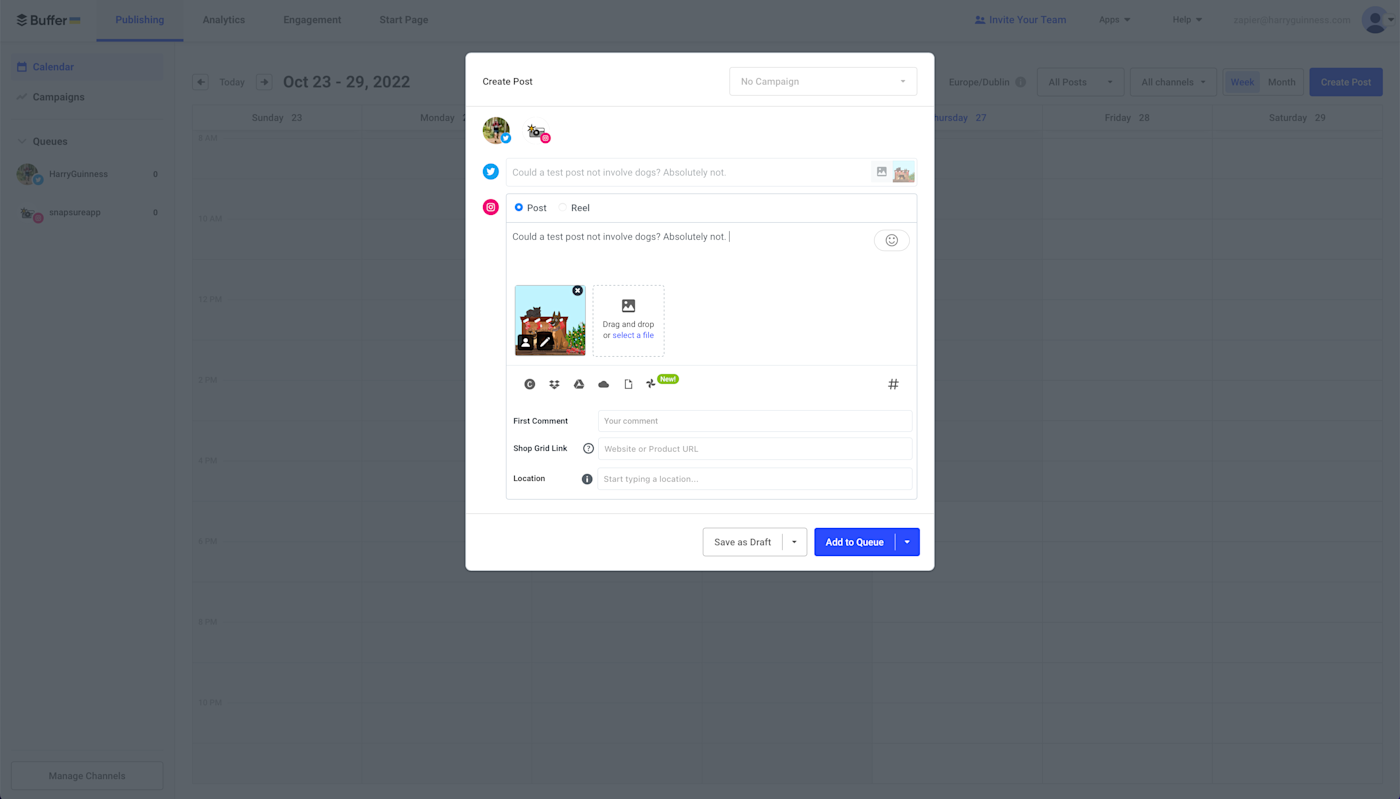
If you need a dead simple content scheduling tool, look no further than Buffer. Without paying a penny, you can line up about a week’s worth of posts across multiple platforms (up to three), including Facebook, Twitter, LinkedIn, Instagram, TikTok, and YouTube.
For a more comprehensive social media management solution—or if you need to manage more than three social media accounts—you can unlock more channels, get detailed analytics, and use audience engagement tools by upgrading to any of their paid plans.
Another feature that sets Buffer apart from apps is Start Page: it allows you to create a simple landing page of sorts where you can host links to your website, products you want to sell, and other important links. You can even track the link clicks for greater insights.
Buffer pricing: Free plan includes three channels, 30 scheduled posts, and 50 AI credits; $5/month/channel (billed annually) for the Enterprise plan, which includes 2,000 scheduled posts, engagement tools, detailed analytics, and 150 AI credits.
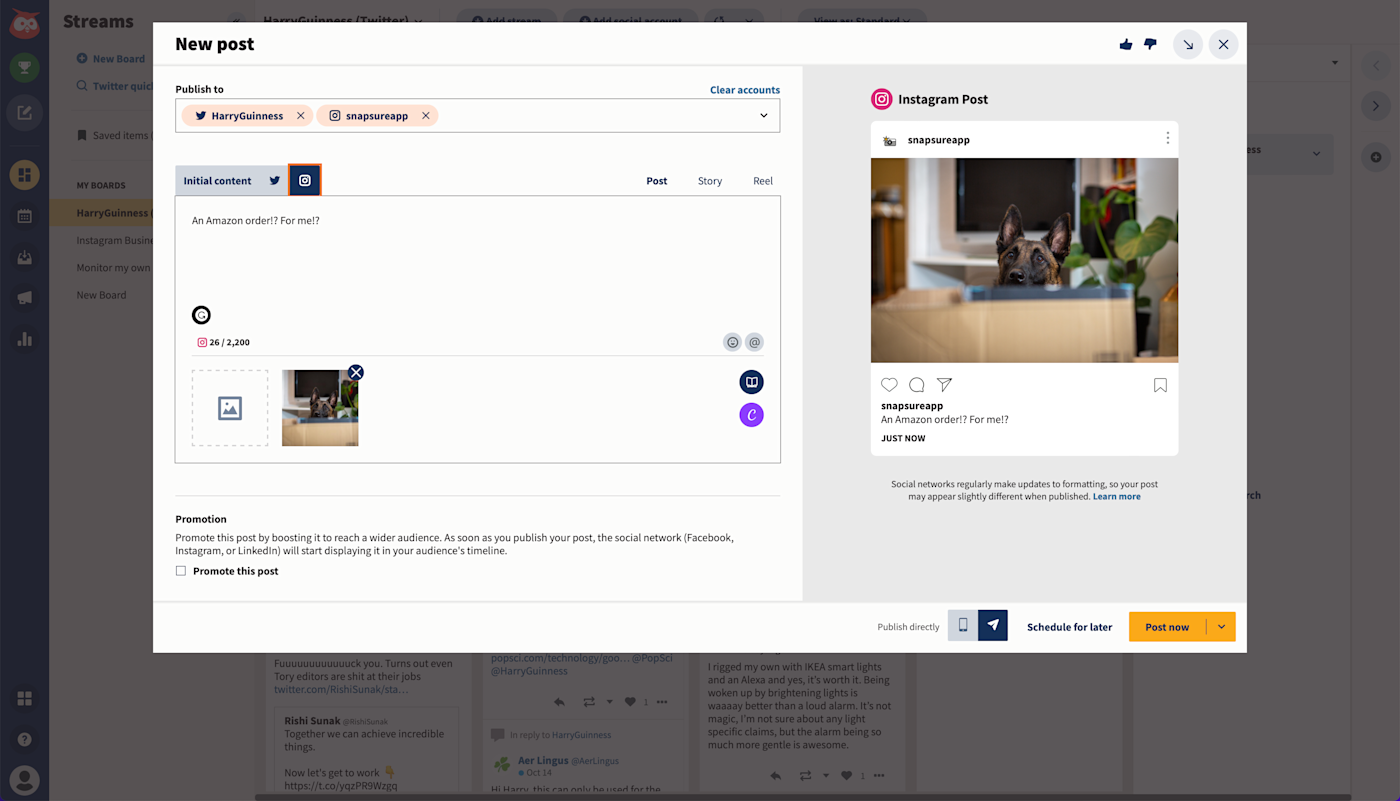
If you need a robust social media management platform and you have the budget, Hootsuite is the robust social media management platform you need.
While Hootsuite offers the same features available on most other social media management apps, including AI-powered tools, Hootsuite does a better job of laying everything out. For example, Hootsuite Streams enables you to create a custom social media dashboard where you can manage activity across all your accounts, engage with your audience, and even monitor social topics, trends, and profiles (within the bounds offered by social media companies).
Since Hootsuite is one of the more expensive apps out there, it’s better geared toward businesses that can convert social engagement into revenue.
Hootsuite pricing: No free option, but you can do a 30-day free trial of any Hootsuite plan; $99/month (billed annually) for the Professional plan, which includes one user, up to 10 social accounts, and unlimited scheduled posts.
Tip: For a more in-depth look at how Hootsuite and Buffer stack up against each other, check out our social media management app showdown. Plus, learn how to use social media automation to promote your content and increase your marketing reach.
Creating polished presentations is a tedious and time-consuming task—and that’s after you’ve outlined your slides. If you’re delivering a basic presentation, the classics like Microsoft PowerPoint and Google Slides will do the trick. But if you want to quickly create professional-looking slideshows that actually keep your audiences engaged, here are the best apps for making presentations.
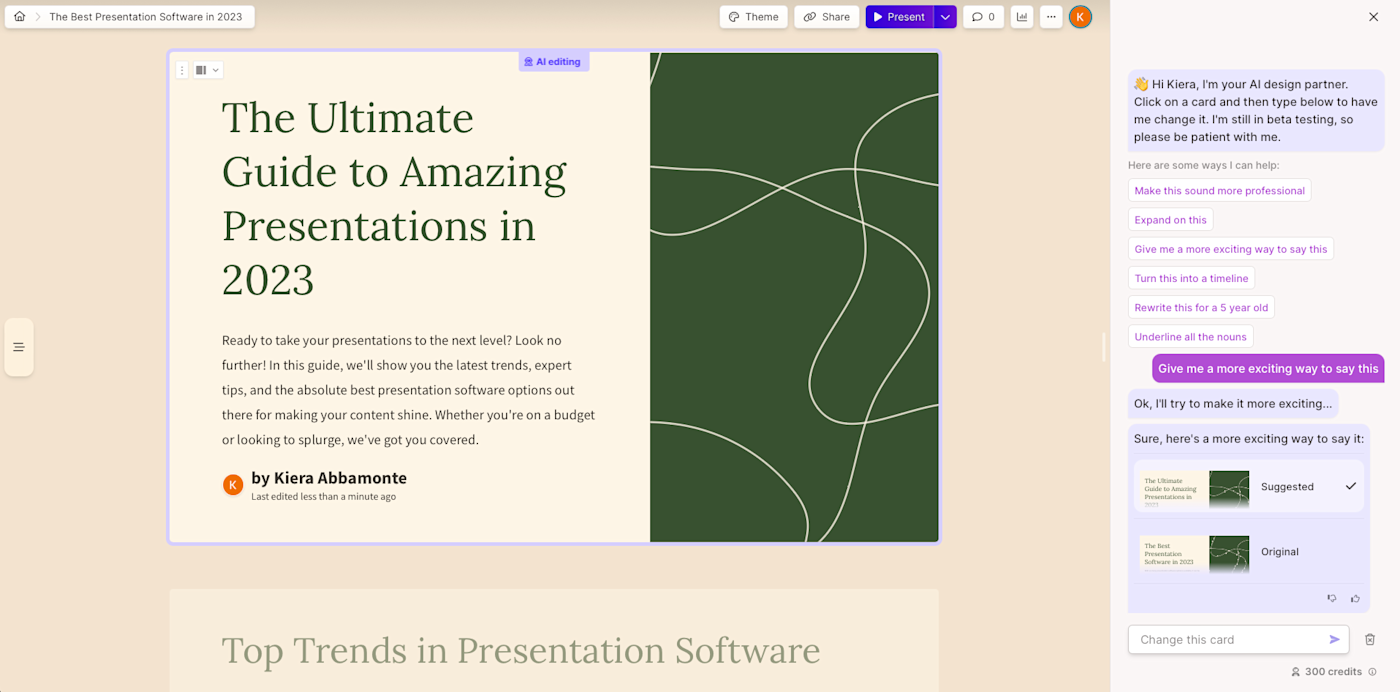
With Gamma, you can leverage the power of AI to generate a fully fleshed-out deck in a matter of seconds. All you need to do is give the app a topic—or upload an outline, notes, or any other document—pick a presentation theme, and watch as your slides come to life.
The results will likely need some fine-tuning—Gamma’s much more geared toward the iterative chatbot experience (à la ChatGPT)—but it still provides a useful jumping-off point. Gamma also offers a couple of practical features that help you keep your audience focused on the topic at hand:
Content blocks: group your content into collapsible blocks directly on your slide, expanding them only when you’re ready to present.
Spotlight: highlight one talking point at a time, while Gamma automatically fades out the rest.
Gamma pricing: Free Starter plan includes unlimited users, 400 AI deck credits, and basic analytics; $16/user/month (billed annually) for the Pro plan (“coming soon” as of this writing) includes unlimited AI credits, no “Made with Gamma” badge, and advanced theme customization.
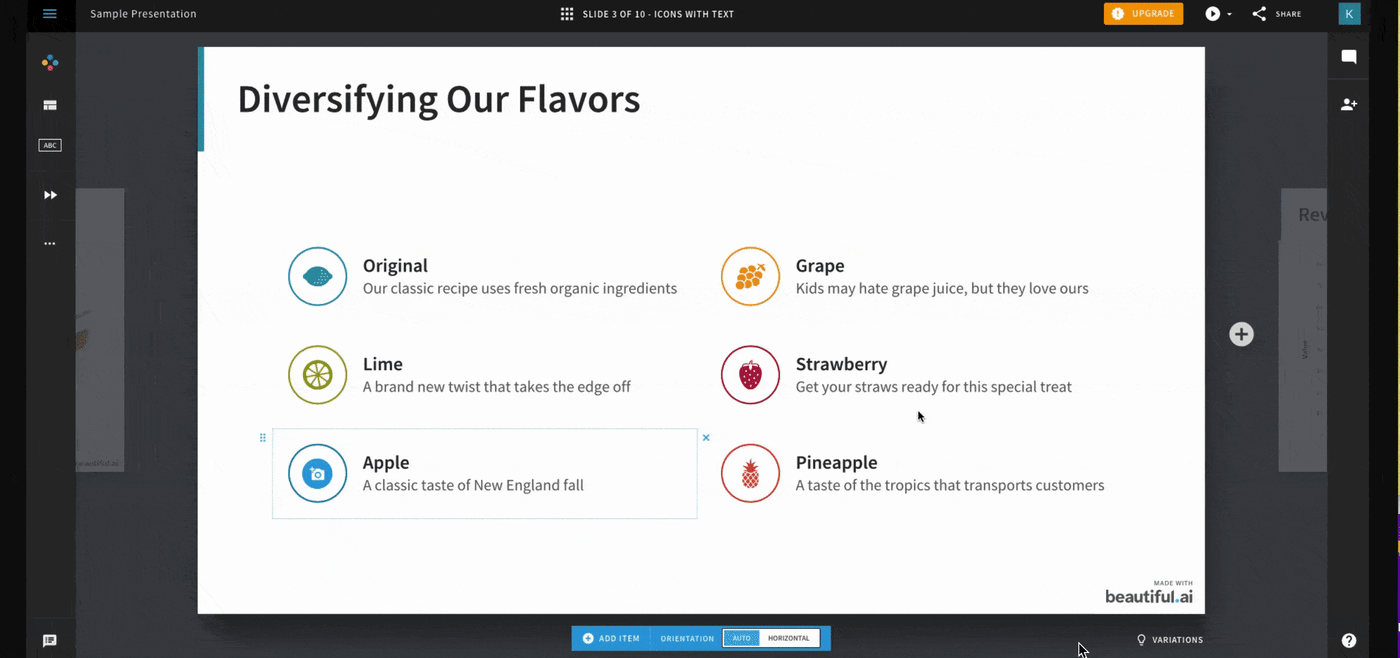
If you need help making your data and ideas look as good as they should, then Beautiful.ai is for you. As the name suggests, Beautiful.ai uses AI to automatically modify your presentations—from layouts to alignment to granular spacing issues. Need to edit your slides further? The platform is a little different from most presentation software, but it’s still intuitive to use. For example, to resize an image, simply drag a handle to make it bigger or smaller.
And if you use Google Drive, you can connect it with Beautiful.ai to quickly save all your presentations in your go-to cloud storage app, making it more convenient for sharing and team collaboration.
Beautiful.ai pricing: $12/month for the Pro plan (billed annually) includes unlimited slides, AI content generation, and PowerPoint import/export; $40/user/month for the Team plan includes extra collaboration and workspace features like a shared asset library, and custom brand controls.
Webinars are a great way to increase your brand awareness, move leads through the sales funnel, and amplify your brand’s authority. But there’s more to hosting a webinar than simply creating compelling content—you also need to invite and manage attendees, interact with your audience, and actually run the webinar. This is where webinar software comes in. Here are the best webinar hosting platforms to help you streamline and automate all the logistics related to running a successful webinar.
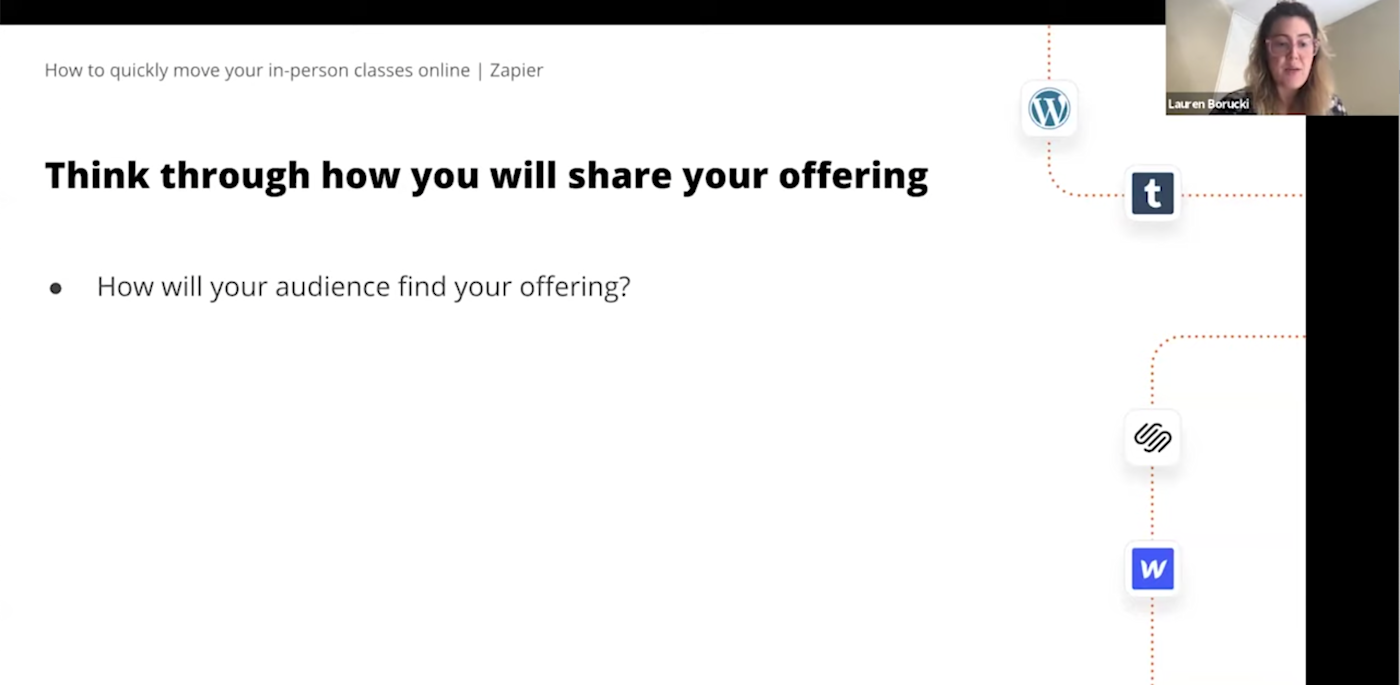
Chances are you’re already familiar with Zoom for video conferencing. But the same features that make it great for connecting with your teammates also make it ideal for hosting webinars, especially if you’re presenting a lot of videos or featuring multiple panelists.
Since Zoom is such a popular tool, it’s safe to assume that everyone already has it installed on their computer and configured to work. This means that joining your webinar is as simple as clicking a link.
Once your webinar’s live, Zoom offers additional features to create a dynamic webinar, including side-by-side views and engagement-boosting tools like Q&A, polling, and reactions. You can even connect Zoom with Facebook and YouTube, so you can extend your reach, or connect Zoom to Zapier to automate your webinar workflows.
Zoom Webinars pricing: Starts at $79/month (or $690/year), which includes up to 500 attendees and limited event analytics and reporting.
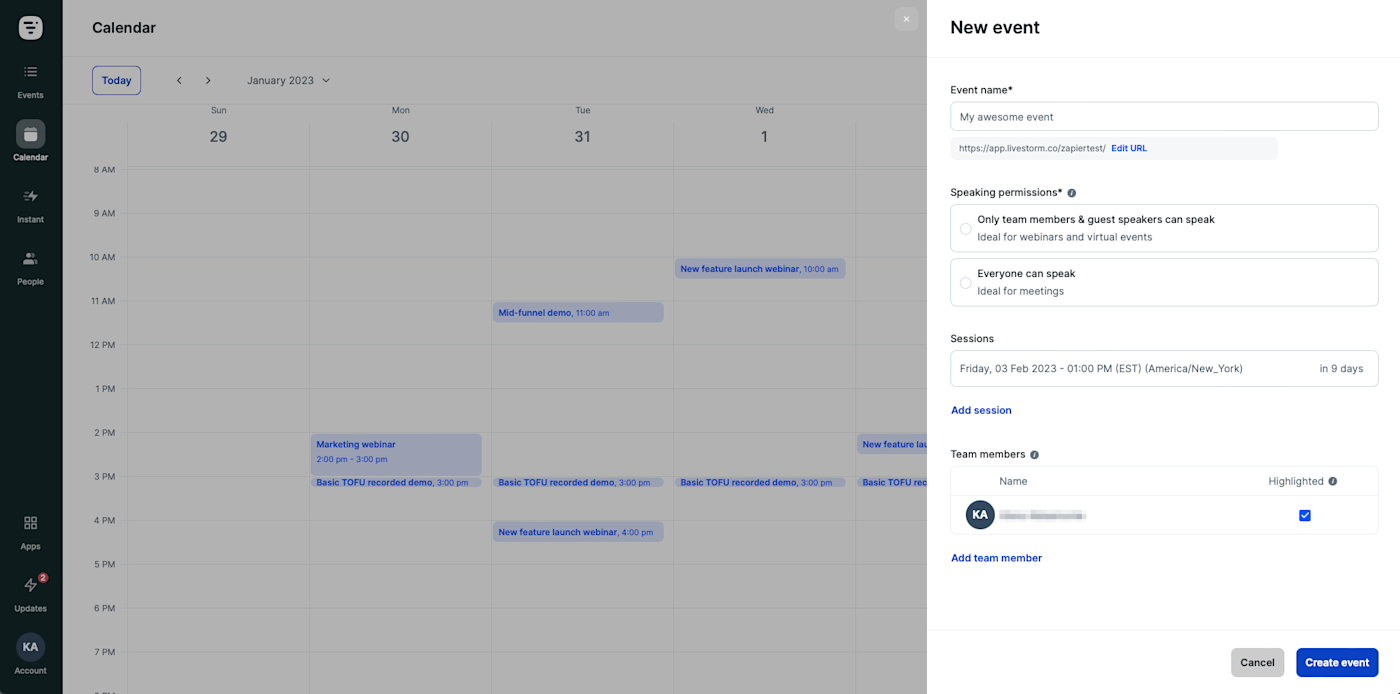
If you host webinars on a regular basis, you need an app that automatically tracks your event schedule, so you don’t have to. Enter: Livestorm. In addition to webinar schedule management and an easy-to-use interface, Livestorm comes fully loaded with all the features you need to host a webinar and keep your audience coming back for more:
Customizable registration forms that you can send via email, share via link, or embed right on your website.
Pre-built, automated email flows for every event, which you can edit or send as is.
Custom call-to-actions that can be pushed live any time during the event.
Livestorm also offers in-depth event analytics, so you can fine-tune your webinar based on what’s working for your audience—and what’s not.
Livestorm pricing: Free plan includes up to 20-minute sessions and 30 live attendees per event; Pro plan starts at $79/month (billed annually), which includes up to four hours per session, 100 live attendees per event, and HubSpot integration.
Are webinars a big part of your marketing strategy? Here are four ways to automate your webinar marketing.
As social media platforms increasingly favor videos over still images, successful businesses need to jump on the video train if they want to get in front of their customers. While adding another medium (and all its related efforts) sounds daunting, AI video generators and video hosting platforms can help you streamline the process. Here are the best tools for the job.
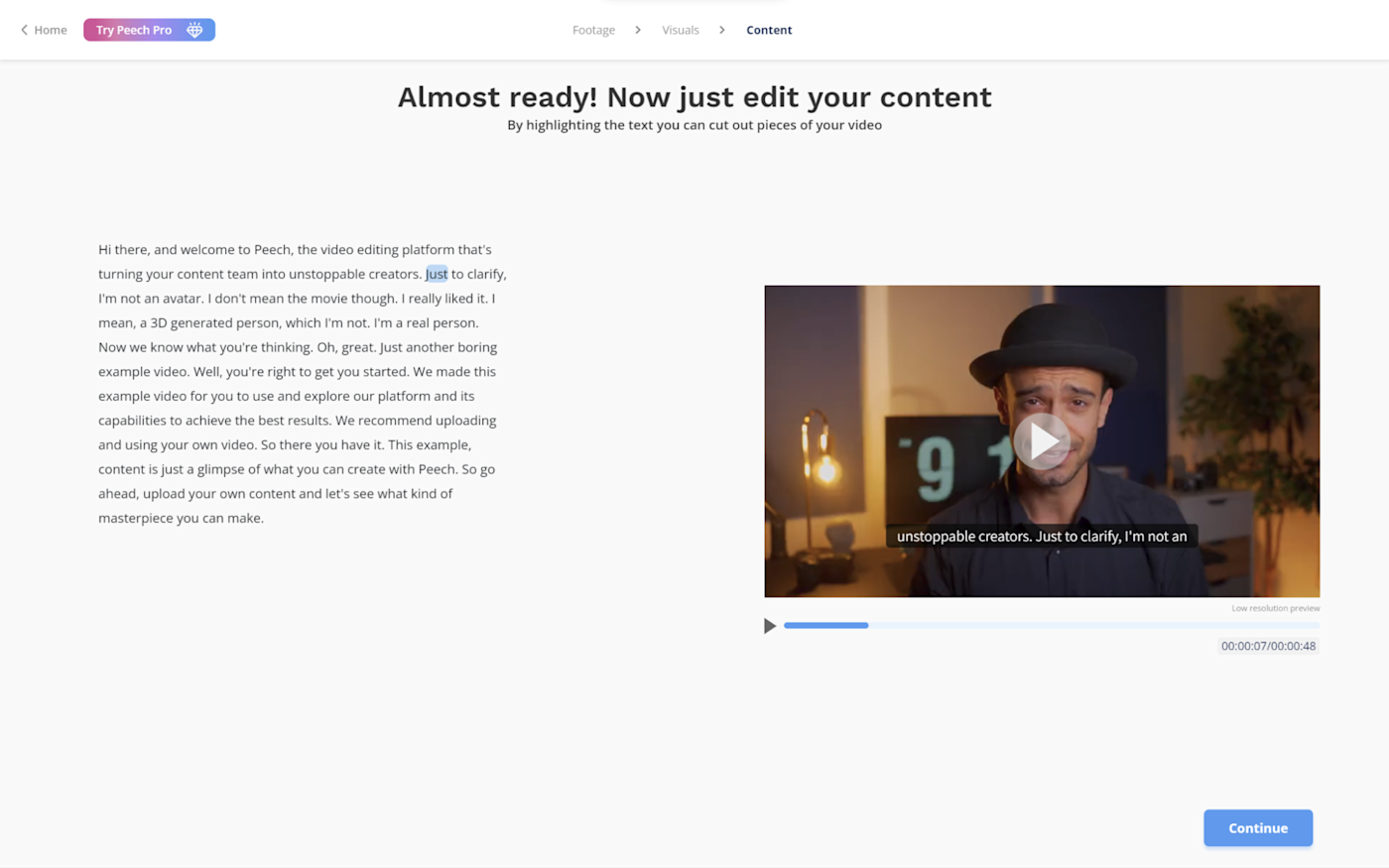
When it comes to content, it’s no longer enough to CO;TD (create once, tailor distribution). Peech speeds up the work of tweaking one asset to fit every channel’s technical specs and target audience.
For example, you can highlight specific lines of a webinar transcript, and Peech’s built-in AI tools will automatically transform them into videos with subtitles and sized to platform-specific ratios, ready to be published. Note: AI-powered features are limited to paid plans.
Peech pricing: Free plan includes two, five-minute videos per month with a Peech watermark; Basic plan for $54/seat/month (billed annually) gets you 10, 15-minute videos per month with no watermark and a limited set of AI features.
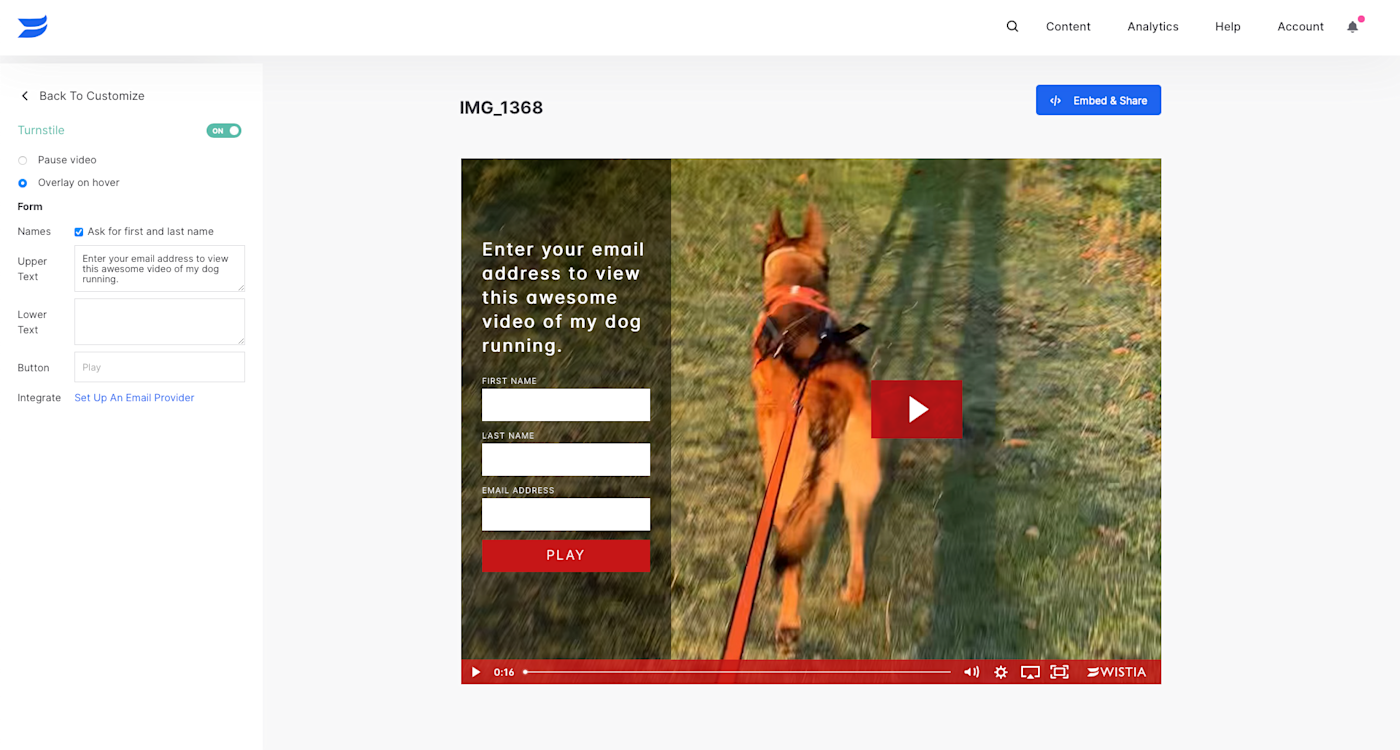
If your primary objective for sharing videos is to generate leads and optimize your ROI, Wistia is the app for you. With Wistia, you can gate your content and use the app’s Turnstile email collector to prompt viewers to enter their email address, so they can access your video. Once a viewer enters their information, they’re automatically added to your email list using Wistia’s email integrations, including email marketing software like Campaign Monitor and Mailchimp.
If you don’t want to gate your content, Wistia offers other powerful video marketing features, including annotation links, end-of-video CTAs, and detailed video stats. And you can connect Wistia to Zapier to automate your video hosting workflows.
Wistia pricing: Free plan includes 10, five-minute videos with Wistia branding, standard video hosting features, and basic video analytics; $19/month (billed annually) for the Plus plan includes 20, 15-minute videos with no Wistia branding, lead generation tools, and email integrations.
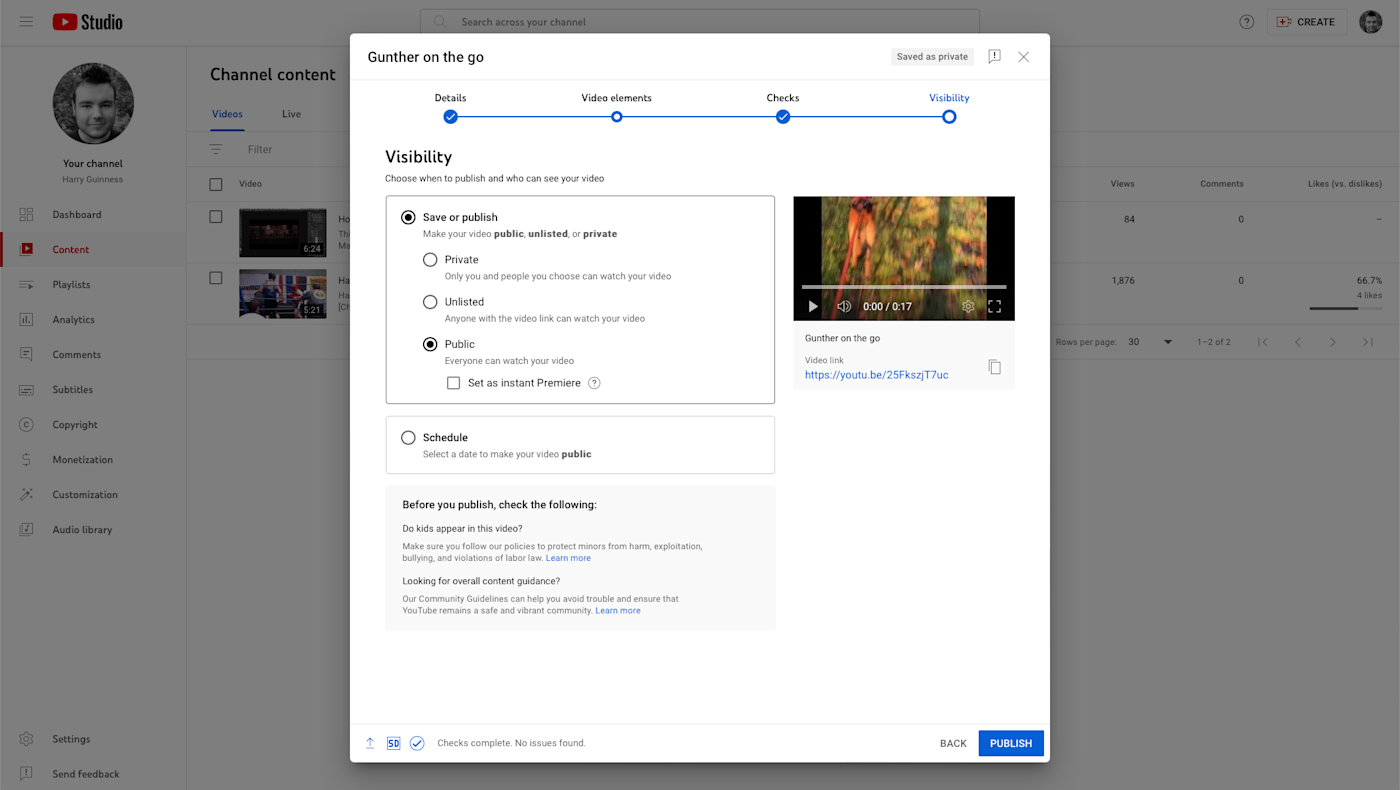
If you want to increase your reach, YouTube is your best bet. Thanks to the platform’s popularity and built-in audience of over 120 million active daily users already interested in video content, all you need to do is optimize your videos for search—or encourage fans to “smash that Like and button”—and you may be able to build a native audience.
Of course, you still have the option to add the videos to your website with a simple embed code—but note that every YouTube video embedded on an external website looks like a YouTube video.
YouTube pricing: Free for uploading and hosting videos.
Tip: You can also connect YouTube with Zapier, so you can automatically do things like upload videos to YouTube and promote new videos to your community.
If you want to increase your brand’s visibility, you need a website. While building a website these days isn’t particularly difficult, it’s still time-consuming. That’s where website builders come in. Here’s the best free website builder you can use to build your website.

If you need to build a website to do things like sell products, take bookings, or run a blog, Wix is a solid choice. And since you can access a lot of the necessary features on a free plan, it’s a budget-friendly option.
You can create a website from scratch, choose from over 900 design templates, or use Wix’s Artificial Design Intelligence (ADI) to create a site, complete with AI-generated writing and visuals. From there, customizing your site is intuitive with Wix’s drag-and-drop editor. Wix also offers detailed SEO features to help you rank on search. While it won’t replace hiring an SEO expert, it’s a good leg up.
: Free plan includes .wixsite.com domain, and basic features; $14/month (billed annually) for the Lite plan includes no Wix branding, a custom domain, and a light marketing suite.
Tip: Build your website even faster with these powerful AI website generators.
Every business has its own ideal format—some operate best completely online, while others prefer a little in-person mingling. However you want to sell your products, the right website builder makes it easy to quickly start selling online. Here are the best eCommerce website builders to help you do everything from listing products to processing payments to shipping inventory.
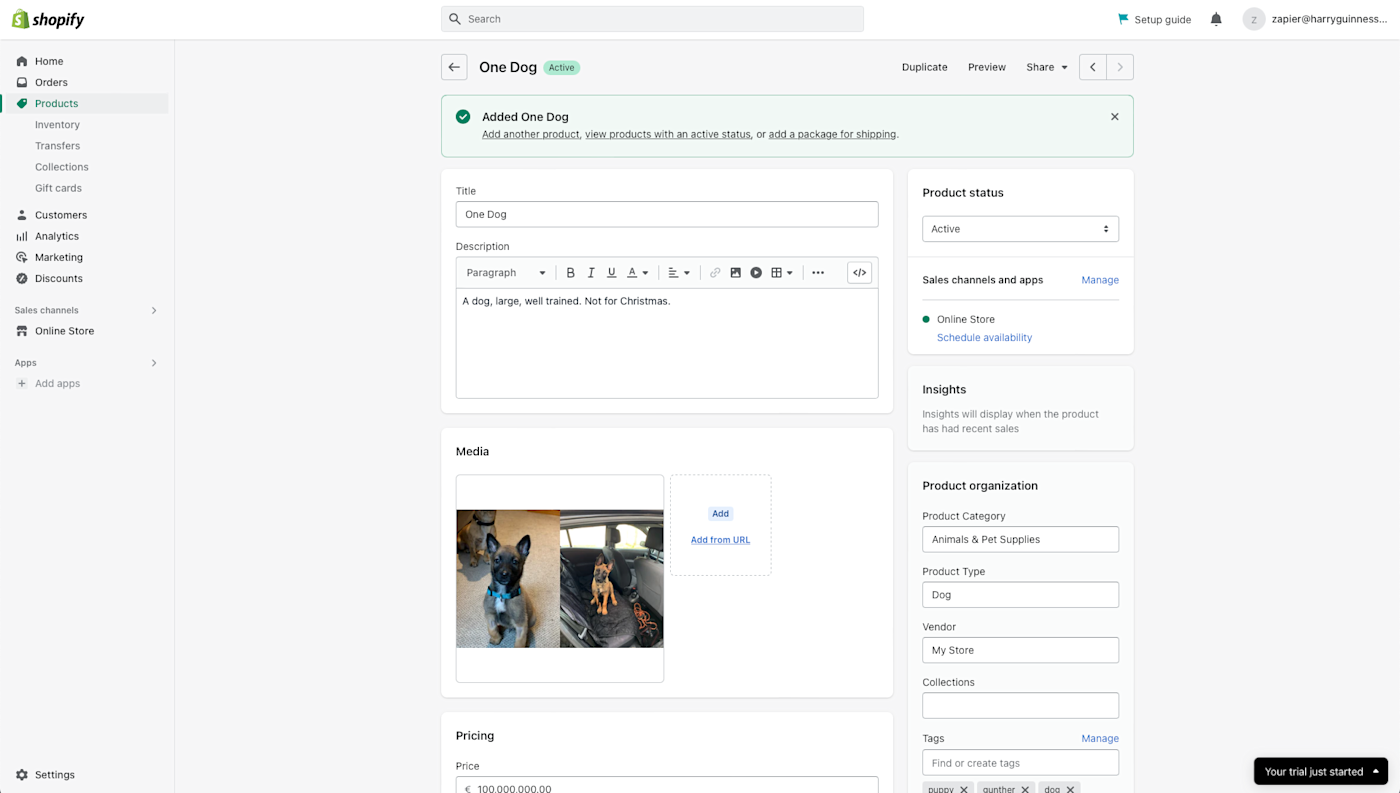
If you primarily want to sell your products online, Shopify makes it easy to get an online store up and running quickly. Shopify’s web app is intuitive to use: everything is clearly labeled and buttons do what you think they should. For example, if you want to add a product, all you have to do is click Products in the sidebar, and then the Add Product button. Fill in all the relevant details (e.g., product name, price, and quantity), and bam—it’s ready to be sold in your online store.
While Shopify ticks most boxes right out the gate, its extensibility and app store are what really make it such a powerful and popular option. You can integrate Shopify with third-party apps like Zapier to do things like automatically promote new products and connect with customers in their favorite apps.
Shopify pricing: Free for 14 days; $39/month (billed annually) for the Basic plan includes basic reports, shipping discount, and credit card rates of 2.9% + $0.30 per online transaction.

If you run a small business that sells products online and in person (primarily in the U.S.), Square is the way to go. With Square’s free plan, you can set up a fully functional eCommerce store in a matter of minutes. All you need to do is complete the questionnaire about your business and its needs. Then Square will guide you through the process of configuring your online store to meet them.
Square also offers basic email marketing features, so you can keep in touch with your customers, run ad campaigns, or get customer feedback. It also syncs your online and offline products under a single dashboard, making it easy to manage your inventory.
One notable downside to Square is that its storefront customization options (or lack thereof) offer little flexibility in terms of the look and feel of your site.
Square pricing: Free with a 2.9% + $0.30 fee per transaction includes an unlimited catalog, basic site layouts and controls, marketing tools, and a Square branded site; $29/month (billed annually) for the Plus plan with a 2.9% + $0.30 fee per transaction includes a custom domain and advanced design features with no Square branding.
Tip: Automatically add new customers to your email newsletter, so you can let them know about the latest products or sales—and grow your store’s revenue.
Landing pages are a great way to test new ideas, so you can adapt to whatever seems to resonate with your target audience. Since the key to landing pages is iteration, you need a landing page builder that can move as fast as the ideas flowing from your brain. Here are the best landing page builders to help you create professional landing pages in a matter of hours.
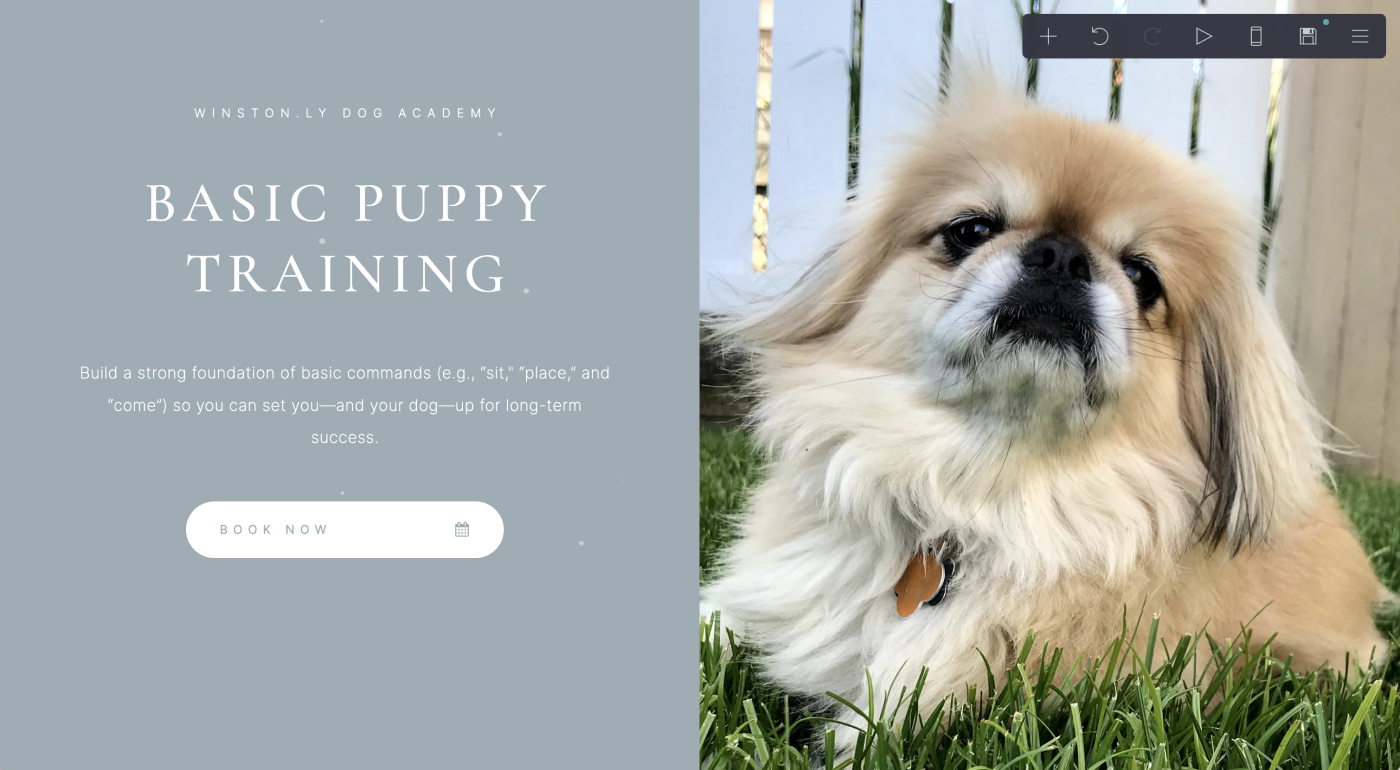
If you need to make basic landing pages without breaking the bank (i.e., for free), Carrd is one of the best options out there—and most of its core features are available for free.
Select one of the landing page themes, and get to editing. While most of the editing tools are simple to use—e.g., drag content containers in a snap-and-fit motion—editing text isn’t as intuitive: you have to click the text, and then edit it in the sidebar. But Carrd does support Markdown formatting for a faster way to customize your copy.
To add marketing features like forms and third-party widget embeds (e.g., Stripe and PayPal to process payments), you’ll need to upgrade to the Pro Standard plan. But at $19/year, it’s still a reasonable price.
Carrd pricing: Free plan includes access to core Carrd features and three sites with “Made with Carrd” branding; $19/year for Pro Standard includes up to 10 sites with no branding, custom domain URLs, and Google Analytics.
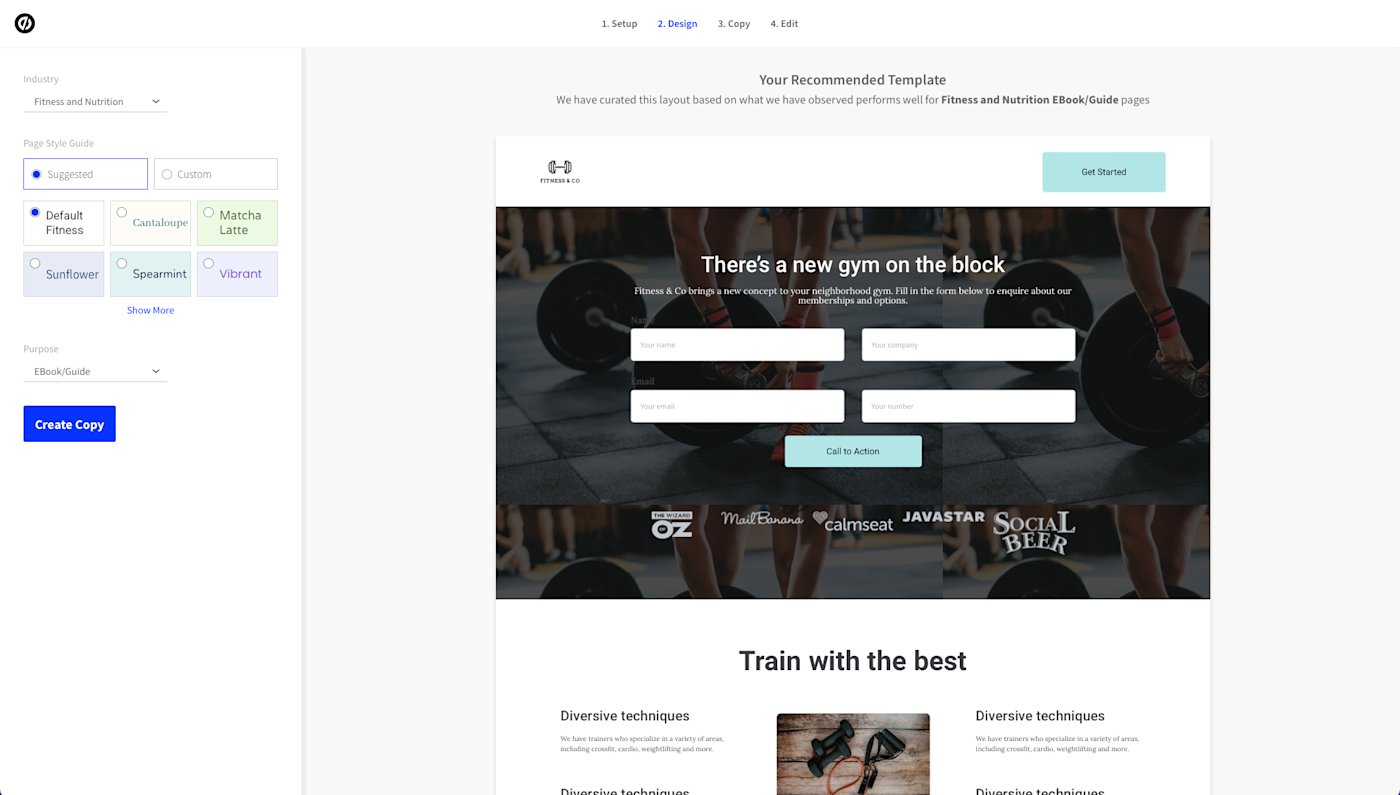
Unbounce offers every landing page feature you could possibly want: design templates, drag-and-drop builder, AI-powered tools (e.g., Smart Builder to automatically generate a landing page based on how you intend to use it), and even pop-ups and sticky bars.
Unbounce’s real power, however, is in its A/B testing and targeting tools. For example, you can dynamically replace text on your page with whatever the person searched for, so you could change your headline to say “Human Resource Management Apps” or “HR Management Tools,” depending on what they were looking for. You can also automate Unbounce with Zapier, connecting it to all the other digital marketing tools you use.
Unbounce does come at a fairly steep price, though—and an even steeper learning curve. But if you’re prepared to invest the time, Unbounce will make it worth your while.
Unbounce pricing: $74/month (billed annually) for the Launch plan includes unlimited landing pages, one domain, up to 500 conversions, and 20,000 monthly visitors.
Tip: Use Zapier to connect your go-to apps, so you can automate tedious work like adding new leads to an email list and following up with them.
In a highly-competitive market, anything you can do to boost your search presence is a plus. And with the right keyword research tool, it’s easy to find the right keywords to target—without breaking the bank. Here’s the best free keyword research tool to simplify and streamline your research process.

Ahrefs Free SEO Tools can handle just about anything a basic SEO operation needs: keyword research, yes, but also link building, ranking and traffic monitoring, and SEO audits. Among other tools, the full suite of free SEO tools includes a Free Keyword Generator (up to 150 keyword ideas), Keyword Difficulty Checker (difficulty score, backlink estimate, and basic SERP analysis), and Keyword Rank Checker.
While these free tools won’t give you the same in-depth data you’d get on a paid plan, it’s still a pretty robust set of tools for zero dollars. And if your budget changes, you can always upgrade.
Ahrefs price: Free; $83/month (billed annually) for the Lite plan includes 500 credits per month, additional data, and five keywords lists.
Whether you’re in the beginning stages of starting a business or you’re revamping your marketing strategy, there’s a lot of research involved in developing buyer personas, identifying competitors, and getting tips for how to fill in existing market gaps. But you don’t have to do all the heavy lifting yourself. Here are the best AI chatbots to use for early-stage marketing research.
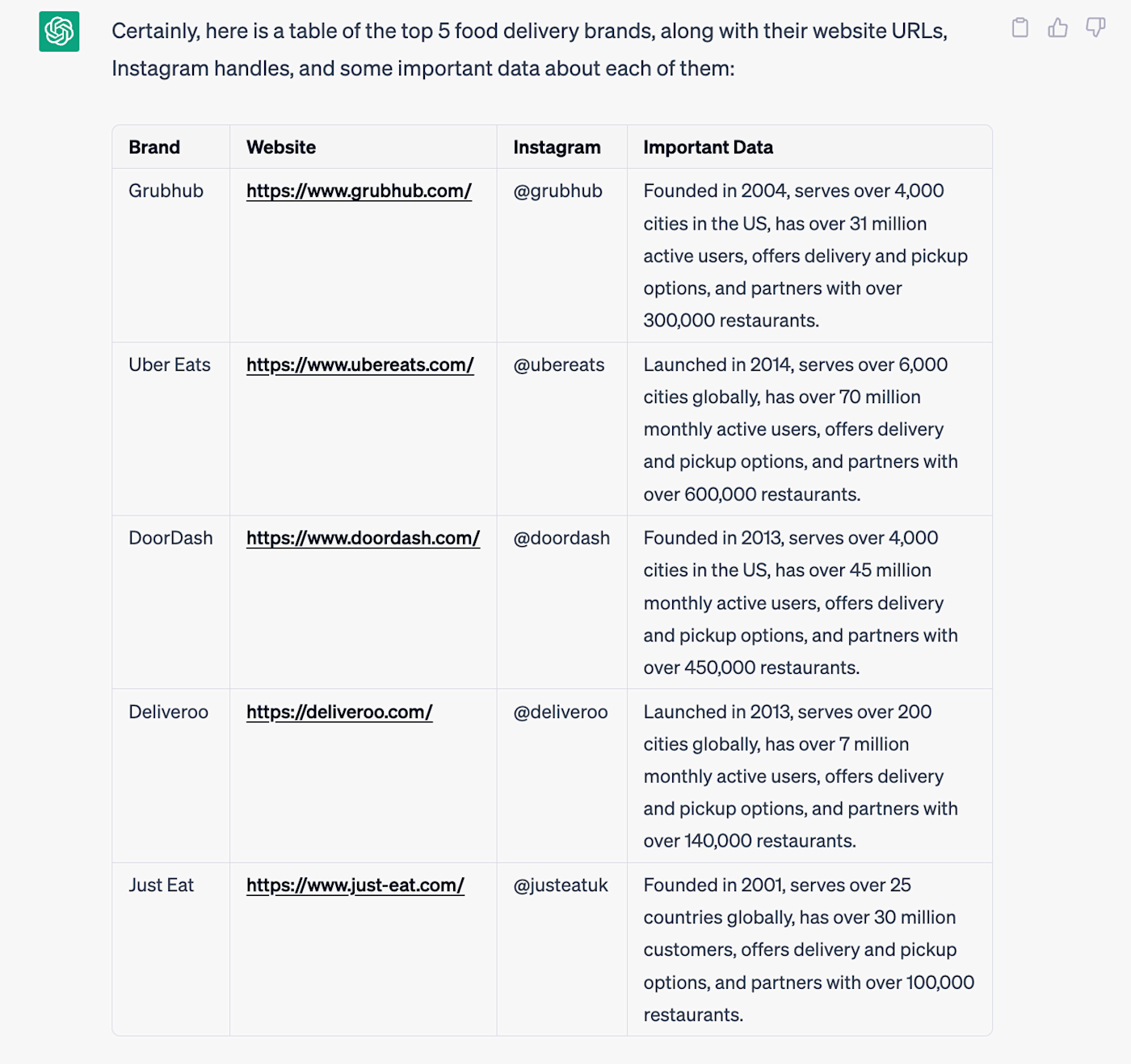
ChatGPT has dominated the chatbot conversation ever since it came on the scene in late 2022. The app is extremely simple to use: enter your prompt and watch as ChatGPT spits out a response within a matter of seconds.
One thing worth emphasizing is that ChatGPT shouldn’t be used as a standalone research tool, especially since it’s been known to generate factually inaccurate responses. Instead, once you’ve gathered the baseline research you need, dig into other resources, like customer reviews, social listening, and survey data.
ChatGPT pricing: Free for GPT-3.5; $20/month for ChatGPT Plus gives you access to the latest GPT model and general access to ChatGPT, even during peak times.
Tip: Learn how to use Zapier’s ChatGPT integration to pull the power of AI into your workflows.
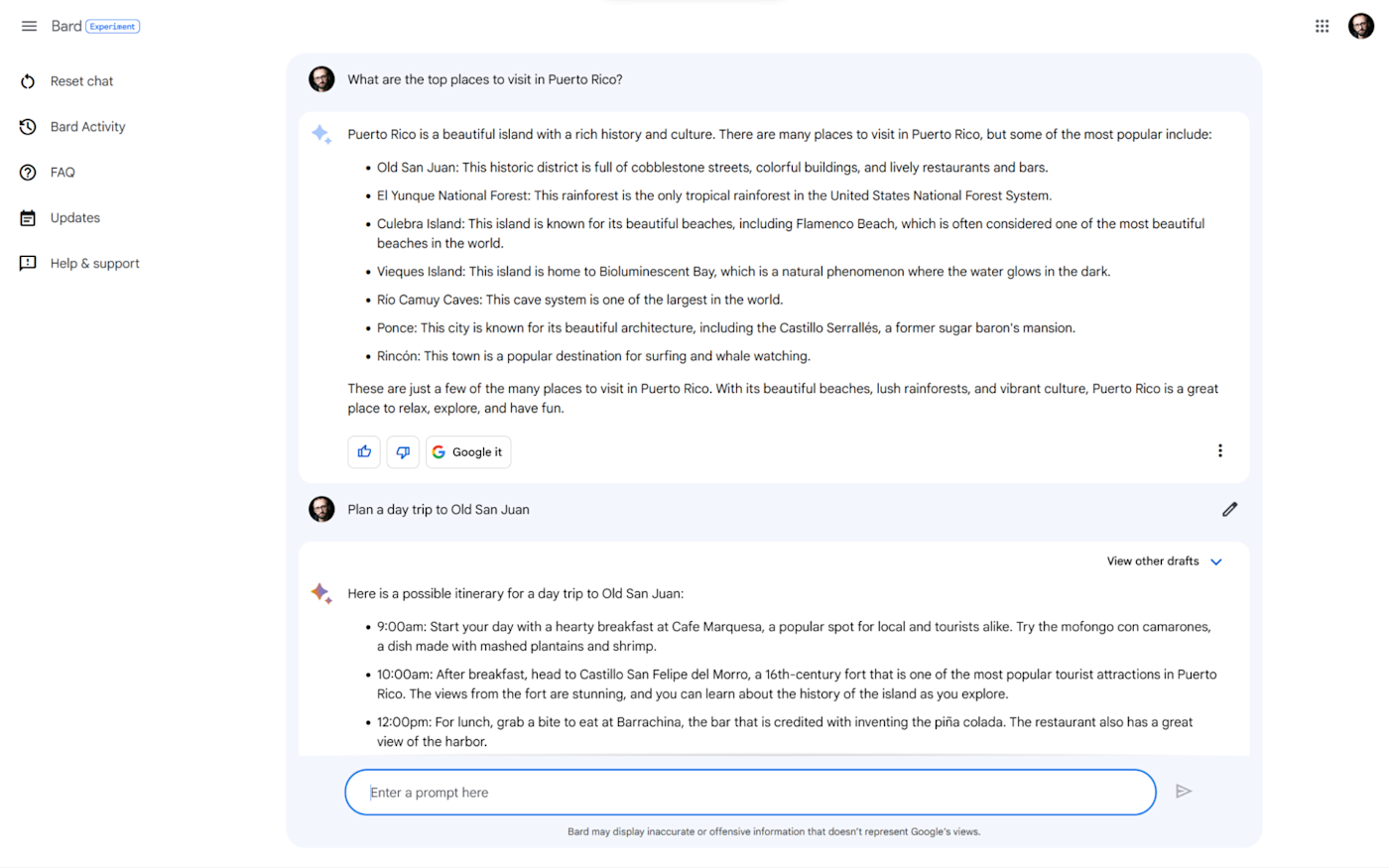
Google Bard offers a lot of what ChatGPT does, faster, and for free. But here are the features that really set it apart:
Real-time data: Google Bard is powered by Google’s Pathways Language Model (PaLM 2) and can offer responses based on real-time, current events.
Prompt library: You can export your prompts to a Google Doc or a Gmail draft—fully formatted and ready to go.
For a detailed breakdown of how ChatGPT and Google Bard stack up, check out our AI chatbot showdown.
Google Bard pricing: Free to users who have access.
These days most websites have a built-in chatbot available to answer customer queries. Chatbots allow customers to find what they need faster and increase the likelihood that they’ll continue to work with you—a true win-win. And bots are easier to build than ever, thanks to a variety of no-code tools. Here’s the best chatbot builder for small businesses.
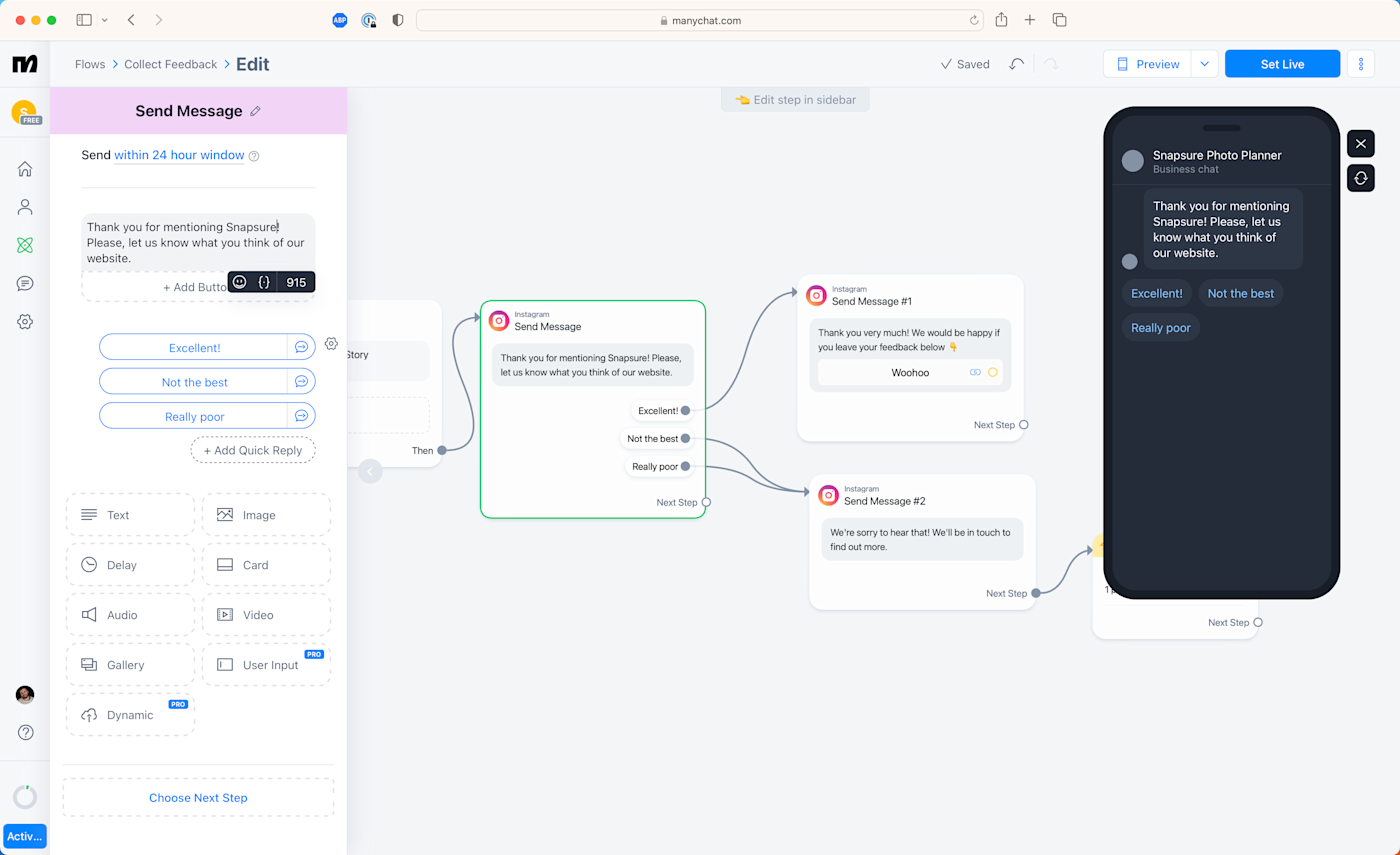
From its easy-to-use drag-and-drop editor to its extremely reasonable price point, Manychat is the best option for building your own chatbot. Even on a free plan, you get access to many features that most other chatbot builders charge for: audience segmentation, growth tools, and unlimited chatbot flows. But your chatbot does come with the Manychat branding.
Choose from over 25 templates, and customize them using a wide range of available triggers and actions. And with Manychat’s no-code visual editor (think: flowchart), it’s easy to understand how conversations will flow based on any given response or action.
Manychat also works on popular channels like Facebook Messenger, Instagram, WhatsApp, and SMS. The only downside is that the website widget redirects people to Messenger, rather than offering a built-in chat box, which can be frustrating.
Manychat pricing: Free for up to 1,000 contacts; $15/month for the Pro plan includes more channels, analytics, and no Manychat branding.
Tip: With Zapier, you can create your own custom chatbot in a matter of minutes—no coding skills required—to improve everything from customer service to team communication.
Online forms and surveys are some of the best ways to get the information you need from your audience. But your ability to create a good survey is only as good as the tools in your arsenal. Whether you’re creating a simple registration form or a detailed market research survey, here are the best tools for building forms and surveys, so you can collect important information—and then do something with it.
Note: If you’re looking to build a lead generation form that will integrate with your other digital marketing tools, give Zapier Interfaces a try.
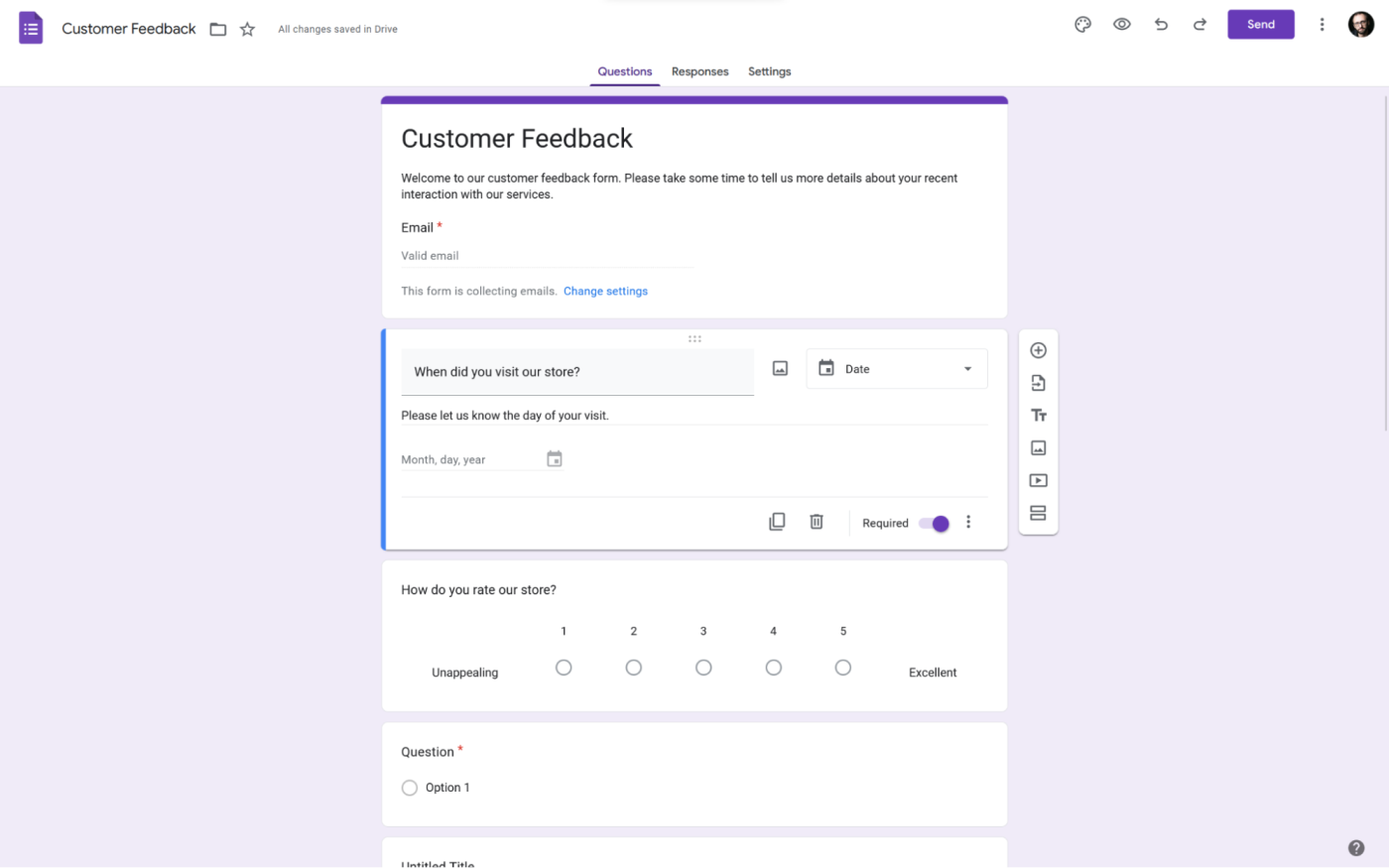
At the low price of free and unlimited everything (forms, questions, submissions, and collaboration), Google Forms is hard to beat. The app provides the same simple yet powerful interface you may be used to if you use other Google apps like Google Docs and Google Sheets.
You can create a form from scratch. Or, to speed up the form creation process, Google Forms offers 16 form templates, each pre-loaded with stock questions you can edit. As you edit your form, Google Forms will try to guess what kind of questions you’re adding to the form, and then modifies it accordingly. For example, if you type, “How do you rate…”, Forms will automatically update the question type to linear scale. Need to add more advanced features like skip logic? It’s hidden, but it’s there.
When the responses start pouring in, you can view them as graphs, pie charts, or simple lists (depending on the question type), making it easier to understand the data.
Google Forms pricing: Free for unlimited everything.
Tip: You can also connect Google Forms to Zapier to automatically create Google Docs templates based on Google Forms responses.
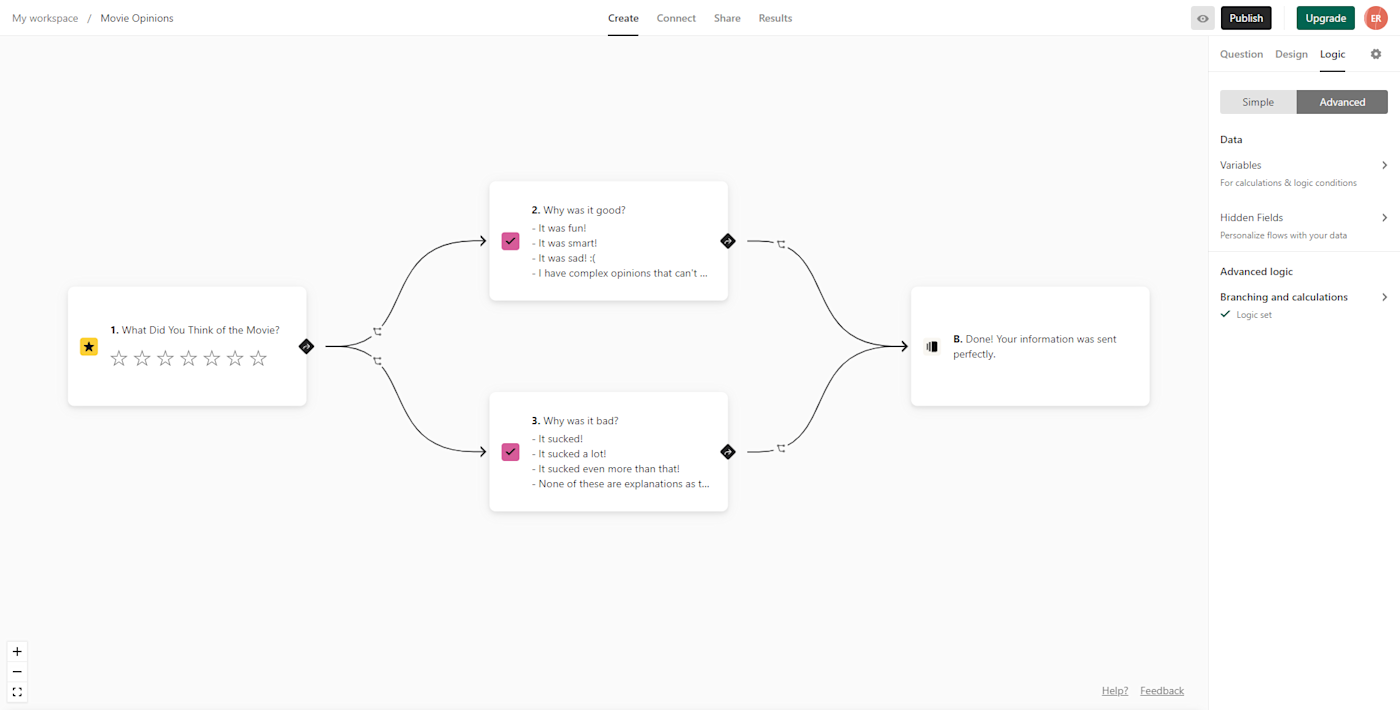
If you’re looking for a form builder with more capabilities—e.g., advanced customization, embeddable chatbots, and complex logic paths, Typeform is a solid option for beginners and advanced survey builders.
Create a form from scratch, choose from over 100 form templates, or let Typeform’s AI build a form for you. From there, you can modify the design by switching up the question card layouts, fonts, icons, and alignments. Typeform makes it easy to share your form via email, social media, or QR code. You can even embed the form on your website as a chat window, showing the questions card by card, making it a truly conversational form.
To help you get even more out of your responses, Typefrom offers the ability to tag submissions, letting you organize them by your own categories, or even attach tasks if a response requires a follow-up.
Typeform pricing: Free for up to three surveys with ten questions each; $25/month (billed annually) for the Basic plan gets you unlimited forms and questions, and up to 100 responses each month.
Tip: Connect Typeform with Zapier, so you can automatically do things like update your CRM with lead data, create support tickets, and analyze lead data.
You’re probably familiar with ChatGPT as the leading AI text generator tool (for now), but if you’re looking to test AI-powered writing assistants, here are the best AI-powered tools to take your writing and editing to the next level.
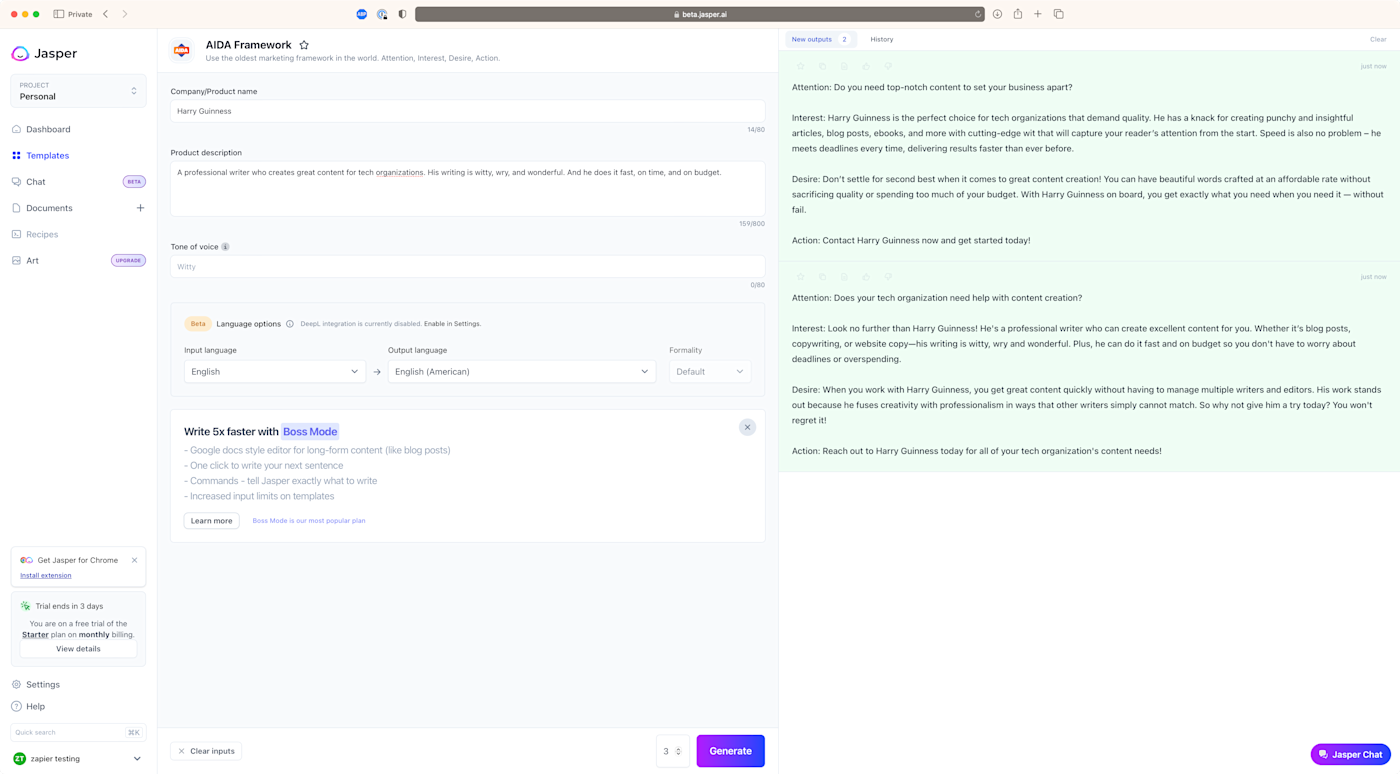
Jasper is an AI-powered writing assistant that’s arguably the best at generating high-quality marketing assets of any length. But quality comes at a cost: Jasper is one of the pricier AI text generators on the market.
As with most AI text generators, you can get Jasper to create content based on a template (e.g., blog post, social media ad, and eCommerce product descriptions). Or, you can start from scratch in a Google Docs-like editor. And since Jasper uses the best grammar, language, and plagiarism tools available, you’ll have a solid first draft right from the start.
Jasper can also be trained to write in multiple brand “voices,” so it can produce different results depending on the medium you’re writing for. Want to optimize your content for search? Jasper integrates with tools for SEO and performance ranking, making it easy to ensure that you’re creating the highest-performing content possible.
Jasper pricing: $39/month (billed annually) for the Creator plan includes one seat, 50 knowledge assets (to train Jasper on things like your brand voice, product, and audience), and SEO mode; $99/month for the Teams plan includes three seats, 150 knowledge assets, and custom templates.
Tip: Want to speed up the idea-to-draft process? Use Zapier to connect your favorite apps to Jasper, so you can automatically do things like create content outlines, draft responses to customer emails, and create video scripts.
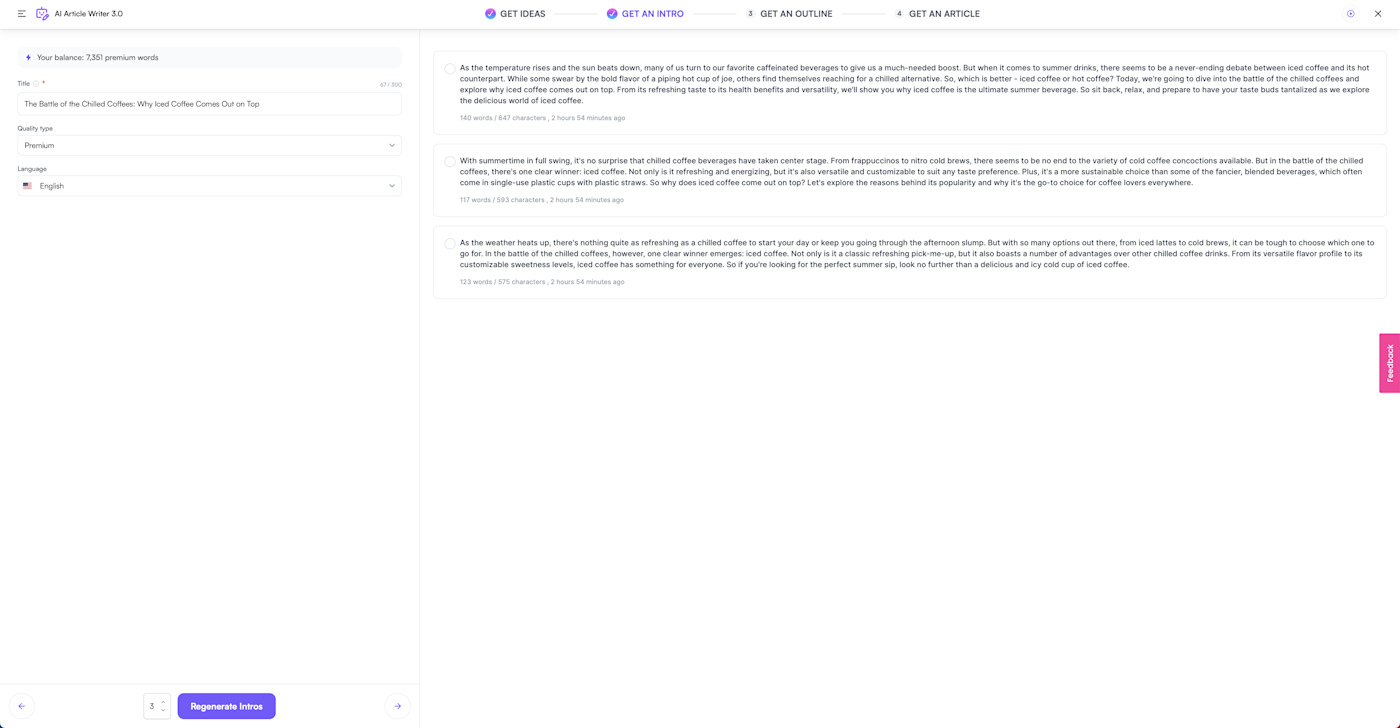
If having the latest and greatest AI model matters to you, Writesonic is the app for you. Writesonic offers features that you’d expect from any other AI text generator—e.g., a Google Docs-style editor, templates, and a browser extension—but what sets it apart from other apps is that it allows you to choose which GPT model to use: Premium (GPT-3.5), Superior (GPT-4), or the forthcoming Ultimate (GPT-4 32K). If you choose the latest model (GPT-4), this means, in theory, that you get more accurate, human-like outputs.
And to help you save even more time, Writesonic offers an AI article writer (powered by GPT-4 32K), which generates 3000-word blog posts that are already optimized for search. You can also connect Writesonic to Zapier to automate more of your content creation processes.
Writesonic pricing: Free trial includes up to 10,000 words per month and access to GPT-3.5; Business plan starts at $12.67/month (billed annually) for one user and includes 200,000 words per month, access to all GPT models, and the AI article writer.
Tip: Trying to decide between Jasper and Writesonic? Check out our AI writing tool showdown to find out which one’s for you.
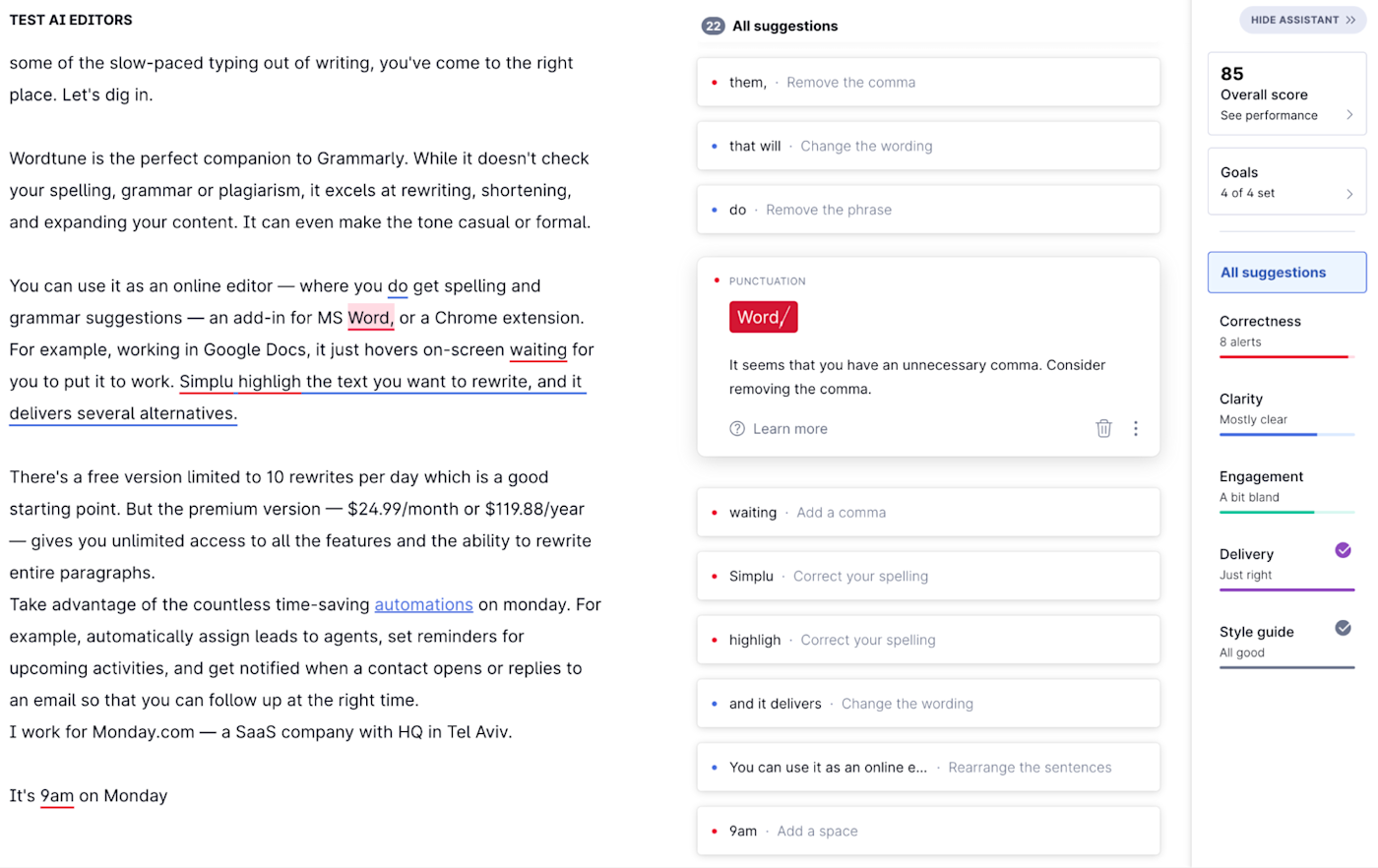
Now that you have a close-to-final draft in hand, it’s time to edit and refine. And the best AI grammar checker tool for the job, without a doubt, is Grammarly. Grammarly comes fully loaded with most of the editing features you need: spelling and grammar checker, custom style guide, and plagiarism checker. The only built-in feature that’s missing is the ability to reword sentences within the document, but you can use its Free Paraphrasing Tool for that.
One thing worth mentioning is that sometimes the suggestions are off—or totally wrong. For example, Grammarly will always suggest that “lululemon” be edited to “Lululemon” (which is not how the company treats their name). But if you’re on a business plan, you can create a style guide for your organization and Grammarly will take that into account when it gives you feedback on your writing.
Grammarly pricing: Free includes basic writing suggestions and 100 GrammarlyGO prompts/month; $12/month for the Premium plan includes full-sentence rewrites, plagiarism detection, and 1000 GrammarlyGO prompts/month.
Email marketing tools allow you to tap into one of the most effective marketing channels: email. These platforms make it easy to connect directly with your target customers, deliver the right message to the right people at the right time, and gain valuable insight into customer behavior. From sending email newsletters to drip campaigns and the software that powers it all, here are the best tools for email marketing.
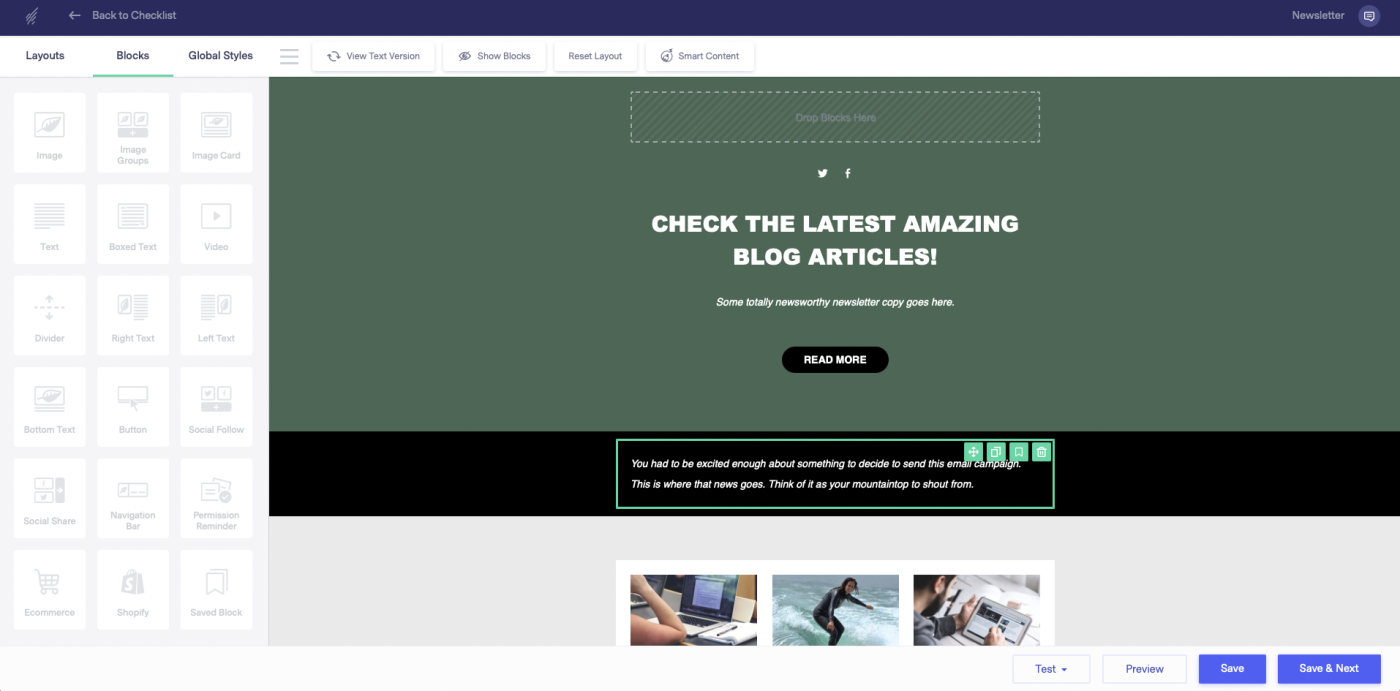
If you’re looking for a powerful email newsletter platform, you can’t go wrong with Benchmark Email. This app has it all: easy-to-use automation, segmentation, and a supremely intuitive editor.
You can create a newsletter from scratch, or pull in a past email and edit. Or you can choose from nearly 100 well-designed email templates, and then use the drag-and-drop editor to customize it. You can also build landing pages to help grow your subscribers using the same drag-and-drop editing tools.
Benchmark Email also offers robust analytics on actions like opens, clicks, bounces, and unsubscribes. And you can take it one step further with a click map of your email content and subscriber-level activity.
Benchmark pricing: Free for up to 500 contacts, 3,500 emails/month, and basic features; starts at $8/month (billed annually) for the Lite plan, which includes everything in the Free plan, more advanced features (e.g., automation, segmentation, and reporting), email scheduling, and landing pages.
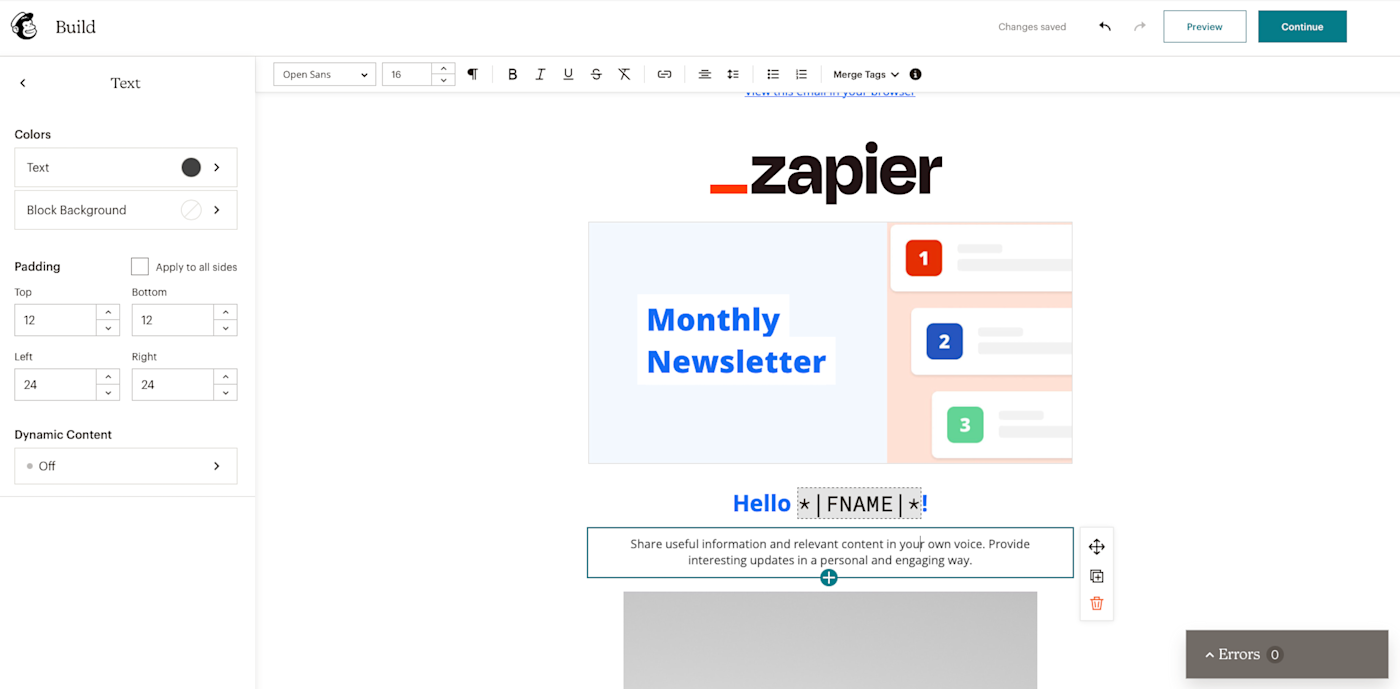
At this point, Mailchimp is almost synonymous with “email marketing platform”—and it’s obvious why: it offers a magical combo of robust features, approachability, and cost-effectiveness.
While other email automation platforms offer more advanced features, Mailchimp provides more than enough for standard automations for small businesses. To set up marketing automations, you can build sophisticated email campaigns, segmented by audience. And with its visual customer journey builder, it’s easy to understand how your audience experiences your campaigns.
On top of all this, Mailchimp also offers other marketing tools for social media, eCommerce, lead forms, landing pages, and websites, making it a truly all-in-one tool for all your marketing needs. And you can connect Mailchimp to Zapier to automate your email marketing workflows.
Mailchimp pricing: Free for up to 500 contacts, and up to 1,000 sends/month with limited features; starts at $13/month (billed annually) for the Essentials plan, which includes access to all email templates, custom branding, expanded automation features, and A/B testing functionality.
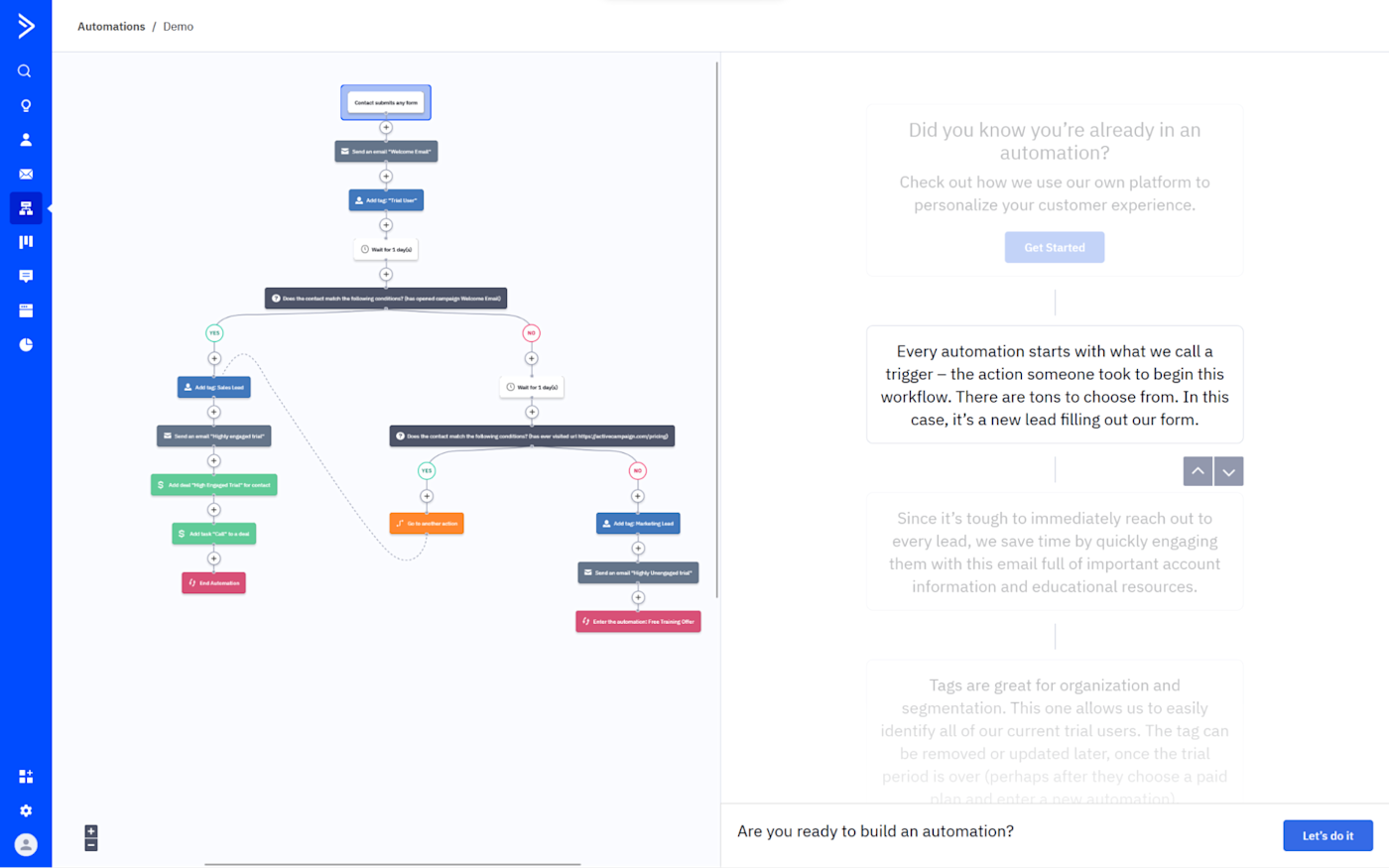
If you need to create customized journeys for your subscribers, the range of triggers, conditions, and actions ActiveCampaign offers makes it the best email drip campaign tool for the job.
The app offers all the features you’d expect from an email marketing platform, but there’s its standout feature: you can add a “Goal,” which serves as an objectives tracker. If the objective is met—say, the customer buys a seat in your workshop—you can have the automation skip the rest of the nurturing sequence, and instead add them to the workshop preparation sequence. You can also connect ActiveCampaign to all your other digital marketing tools using Zapier.
The downside? ActiveCampaign doesn’t offer a free plan—only a free, 14-day trial. But for businesses that want to take their marketing automation, sales automation, and CRM game to the next level, ActiveCampaign has a lot to offer.
ActiveCampaign pricing: Starts at $29/month (billed annually) for the Marketing Lite plan, which includes email campaigns only and basic automation features; starts at $50/month for the Plus plan, which includes eCommerce, analytics, SMS marketing, and abandoned cart automation.
Tip: Debating between Mailchimp and ActiveCampaign? Find out how the two stack up. Also take a look at four ways to automate your email marketing, so you never miss a beat when it comes to connecting with your audience.
Is your current lead management solution disjointed from how you actually connect with your leads and customers? Here are the best customer relationship management (CRM) and lead management apps to help you standardize your workflows and create more consistent touchpoints across channels.
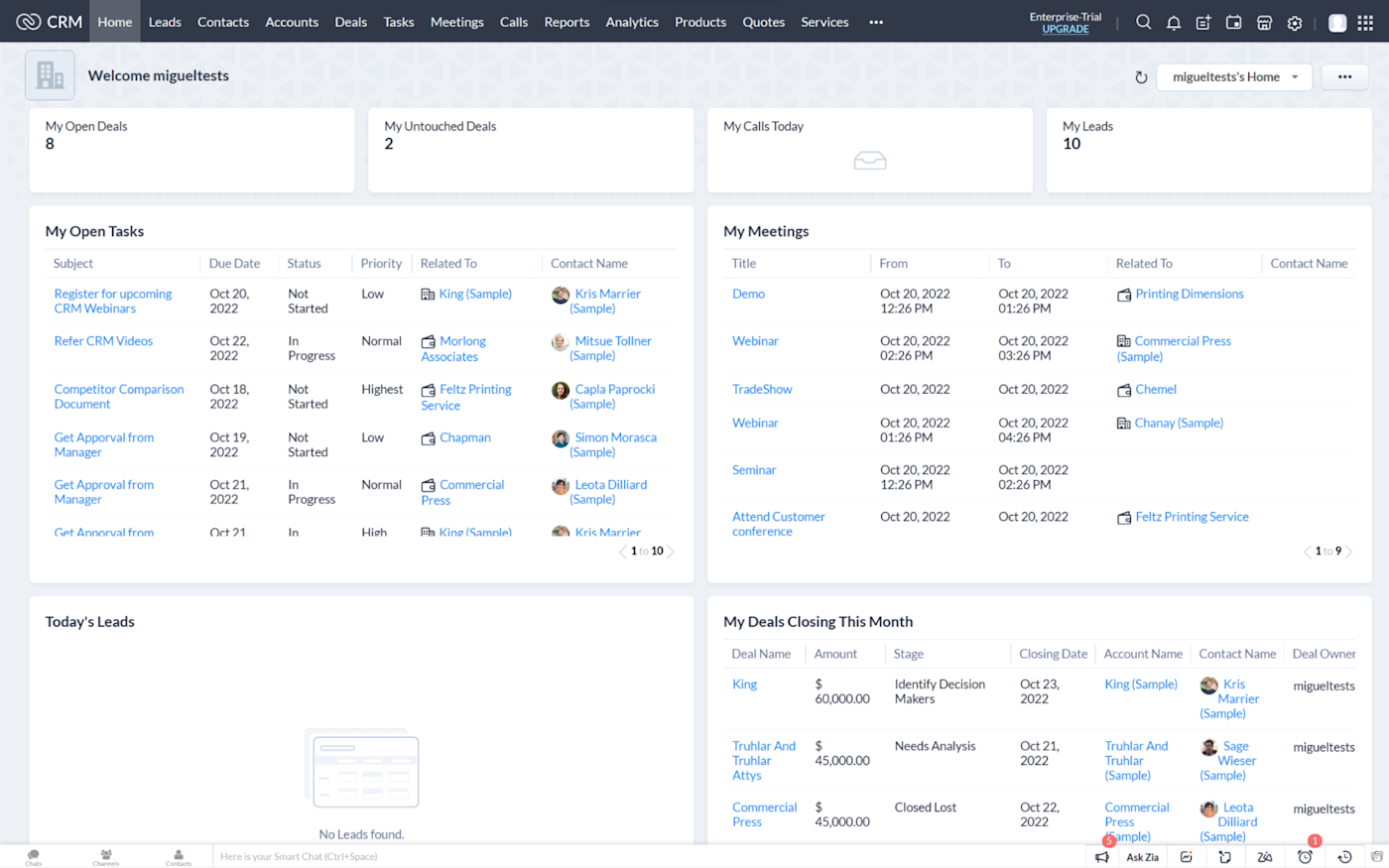
Zoho CRM Plus combines sales, marketing, help desk, social, projects, and other channels into an all-in-one solution that gives you the most bang for your buck. Even as you move to pricier tiers, Zoho remains affordable considering all the features you get: advanced reporting, segmentation, integrations, and predictive intelligence, to name a few. With Zoho, you can modify the look and feel of your CRM, making it easy to view your customer and lead data the way you want.
Zoho also includes one of the more comprehensive reporting features of all CRMs. Dozens of pre-made reports can be configured to show a range of views (e.g., chart, table, and tabular), all of which can be customized. You can even view all the activities and touchpoints (e.g., site visits, sales, emails, and campaigns) related to a customer or lead, giving you a more complete picture of how each person interacts with your company.
Zoho CRM Plus pricing: $57/month/user (billed annually) includes 10GB data storage for up to 200 users, one brand (10 social channels), 10 customer service channels, 250+ survey templates, and unlimited reports.
Tip: Use Zapier to automatically enrich your lead data, so you can send more personalized content throughout a lead’s lifecycle and boost your sales.

Companies looking to scale their operations may naturally think to go with the dominant name in the CRM field: Salesforce Sales Cloud. But since Salesforce’s pricing can be prohibitive, it’s worthwhile to consider the more affordable solution for scaling your business: HubSpot.
Compared to many other CRMs, HubSpot is easy to use. It also extends its capabilities with sales add-ons, over 1,000 third-party app integrations, and optional Hubs that add service, marketing, and other functions. And you can connect it to Zapier, so it works with all your other digital marketing tools.
HubSpot’s CRM tool automatically logs emails with your contacts, helps sales teams navigate and chart sales opportunities, and syncs data across all marketing properties, making it easier to track all your contact interactions and close more leads.
Hubspot CRM pricing: Free for unlimited users; $30/month (billed annually) for the CRM Suite Starter.
Tip: Check out our ultimate guide to CRM automation, so you can automate your most common tasks like adding new lead data and notifying your team.
Without automation, marketing teams would be spending most of their valuable time checking off tedious tasks instead of focusing on high-impact, big-picture tasks. There are tons of marketing tools out there that enable you to build automated workflows, but some shine above the rest. Here are the best tools for marketing automation.
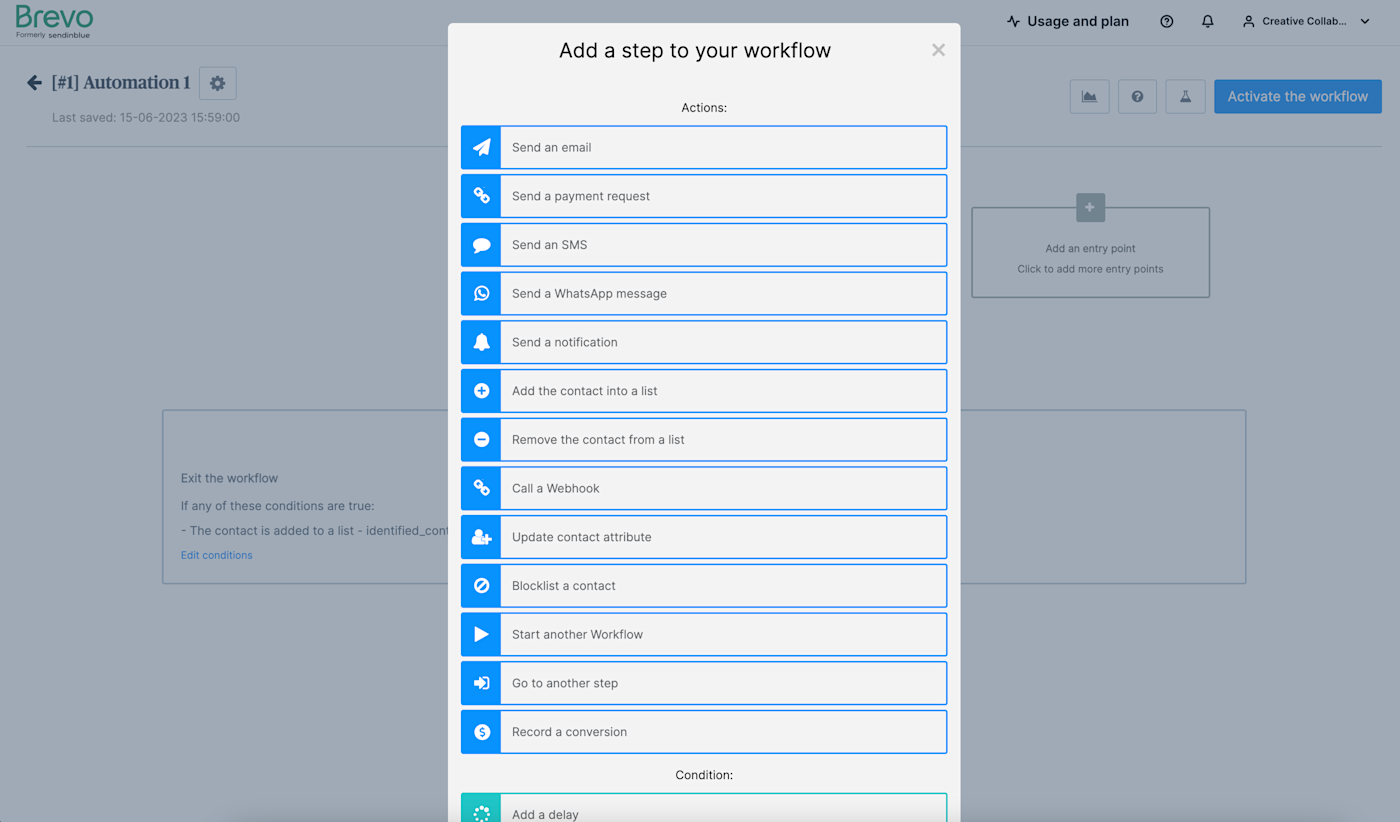
When it comes to marketing automation, Brevo gives you the best bang for your buck. While the platform is relatively simple and lacks the flexibility of other tools, even on a free plan, you can automate email, SMS, chat (including social media), and WhatsApp—more mediums than most paid marketing software.
Brevo’s workflow builder also offers a ton of options, including conditions like delays and A/B splits, and actions like webhooks and CRM updates. And the app isn’t limited to just a marketing workflow builder—its built-in features extend its capabilities to also be your CRM and meeting scheduling tool.
Brevo pricing: Free plan includes one user, 300 emails/day, and Brevo branding; Starts at $22/month (billed annually) for the Marketing Starter plan, which includes 20,000 emails/month, and basic reporting and analytics.
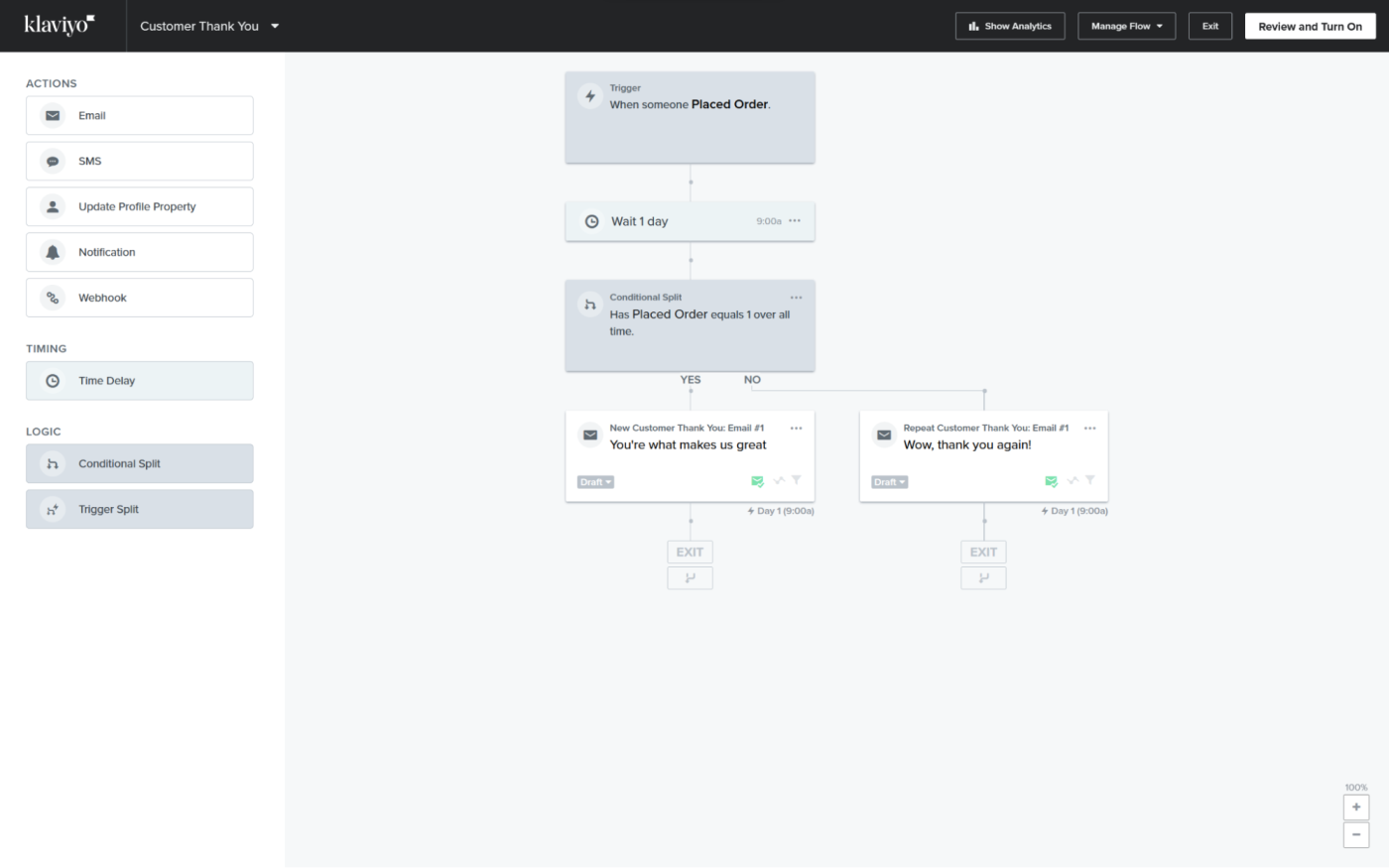
Simply for the ability to drag and drop nearly everything—from workflows to dashboards to forms—Klaviyo gets a gold star for being the most user-friendly marketing automation platform. Klaviyo offers a clean interface. And while it’s not incredibly feature-rich compared to other marketing automation apps, it still comes with all the tools you’d need.
The platform also provides several jumping-off points for creating workflows to automatically do things like prevent lost sales, nurture subscribers, build customer loyalty, update customers on their order status, and send abandoned cart reminders.
Klaviyo price: Free plan includes up to 250 contacts and 500 monthly email sends; the Email plan starts at $30/month and includes up to 1,000 contacts and 10,000 monthly email sends.
A comprehensive digital marketing tech stack is crucial to growing your business. But these apps also require a lot of work to keep running.
With Zapier, you can connect your business-critical apps with the other tools your team uses most—like form builders and meeting schedulers—so you can streamline your processes and easily scale your efforts. Here are some automation resources to get you started.
How to automate your marketing automation apps
Ways to automate your marketing operations and processes
Grow your business with marketing automation
Copyright © 2025 | Portal Map and Partners by PortalMAP
Leave a Reply